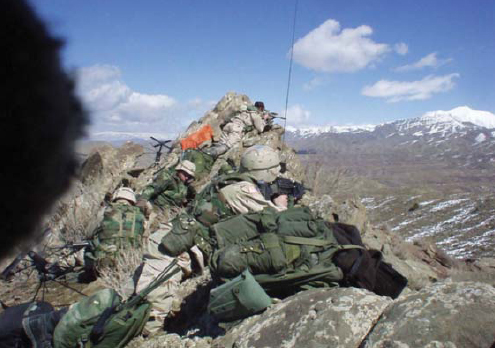
With the two Army and one Navy AFO OPs established and providing crucial intelligence and targeting for Task Force Rakkasan, at least one element of the operation was going to plan. This was soon to change. On March 2, Lieutenant Colonel Blaber, the AFO commander on the ground, received a surprising satellite telephone call from his boss, Brigadier General Trebon.
Essentially Trebon was ordering Blaber to hand over control of the AFO portion of the operation to the SEALs of Task Force Blue, who were moving teams in from Bagram to Gardez for this very purpose. Trebon couched the message in terms of AFO needing “to be out looking for the next battlefield” (quoted in Blaber 2008: 273) but was insistent that the SEALs be given the opportunity to join the fight and take over the operation from the Delta officer.
Blaber was, not surprisingly, stunned by this seemingly illogical request and responded that his teams were fine without resupply for at least another two days and that inserting new teams into the Shahikot immediately without any chance to understand the environment, acclimatize to the altitude, or gain precious advice from the AFO, CIA, and Special Forces was setting them up for failure.
Early the next morning on March 3, Blaber was awoken with the news that two SEAL force elements had arrived at the AFO safe house in Gardez. Blaber spoke with their newly arrived leader, Navy SEAL Lieutenant Commander Vic Hyder. Hyder repeated what Trebon had said and that he planned to insert the two SEAL elements, MAKO 21 and MAKO 30, as soon as possible. Blaber called Trebon in frustration and was met with a blunt response: “Put both of those SEAL teams into the fight tonight. That’s an order” (quoted in Blaber 2008: 275).
Forced into a corner, Blaber and his AFO team had no option but to try to prepare the SEALs as best they could in the limited time available. Whilst AFO and their Special Forces colleagues attempted to bring the newly arrived SEALs up to speed, the SEAL element leader, Hyder, surreptitiously set up an alternate radio link with Trebon and the Task Force 11 forward HQ in Bagram, bypassing the AFO team at Gardez.

Members of Task Force Rakkasan’s command element including Colonel Frank Wiercinski take cover on “The Finger.” Furthest from the camera is MAKO 31’s Combat Controller firing a suppressed M4A1. Note the orange VS-17 identification panel next to him to mark their position to friendly air. (US Army)
The SEALs’ initial plans were straightforward – the first team, MAKO 21, would link up with AFO team JULIET at the northern end of the valley, resupply them, and then establish an OP on the eastern ridge above Task Force Rakkasan’s BPs. The second team, MAKO 30, would insert into an HLZ over 1km northeast of Takur Ghar before climbing to the peak to man their OP. Takur Ghar, being the highest mountain in the area, gave commanding, and strategic, views of the Shahikot and was an obvious site for an observation post. The two teams would insert that night, infiltrated into the AO by two MH-47E Chinooks of the 160th SOAR – RAZOR 03 and its wingman, RAZOR 04.
After delays from an inbound B-52 strike and a faulty MH-47E, which necessitated swapping airframes, RAZOR 03 and RAZOR 04 were finally in the air and heading toward their respective HLZs. The delays had taken precious time and, as dawn crept ever closer, MAKO 30 requested a 24-hour delay to allow an infiltration on the following night but Trebon said simply, “We need you to rethink that. We really need to get you in there tonight,” according to author Malcolm Macpherson (Macpherson 2005: 14).
With the further delays, and Trebon’s insistence on inserting the teams that night, the MAKO 30 team leader, Senior Chief Petty Officer Britt Slabinski (known as “Slab” and who later won the Navy Cross for his actions on Takur Ghar), felt he might have to look at an option Vic Hyder had discussed with him earlier – landing directly on the peak where they intended to establish their OP.
It seemed the only viable option if the team was to insert before daylight. Despite all of the warnings from the AFO team and the fact that he appears to have personally agreed with Blaber, MAKO 30’s team leader had to follow the orders of both his direct boss and Trebon. He directed the Nightstalker crew to insert his team onto the summit of Takur Ghar.
NAIL 22, an orbiting AC-130, swept the peak with its sensors and declared the landing zone “cold” or uninhabited by enemy. The MAKO 30 team leader felt uneasy at the speed with which the sweep was conducted and wondered whether NAIL 22 had the right mountain. In any case, he soon dismissed his doubts and trusted to the AC-130’s technology. As RAZOR 03 was inbound, NAIL 22 left the airspace to support an urgent “troops in contact” call from the Rakkasans in the valley, leaving the helicopter without the reassuring cover of the Spectre as it prepared to land.
The team was now landing on the mountaintop and not on an offset HLZ. This went against both AFO’s stringent “no helicopter” rule and basic military tactics – landing on the site of the intended OP invited trouble. In HVT raids, the helicopters would often land directly “on the X” as speed was the key consideration in killing or capturing the HVT before he could escape or mount a defense. In special reconnaissance, it simply meant warning the enemy that a friendly force had landed in the area and all but pinpointed the location of the OP.
Landing at an offset HLZ and walking in gave the team a much better chance of remaining undetected. With the evident time pressures, and the additional pressure placed upon him from the geographically remote Task Force 11 leadership, Slab was left with little to no choice but to go against these cardinal rules and land his team on the peak.
With the well-known secrecy of JSOC, it is difficult to know exactly how the MAKO 30 element were armed and equipped; however, a reasonably accurate picture can be developed from various sources. The team went in with its primary purpose being surveillance but with enough firepower to hopefully fight their way out of any trouble.
It appears the team member known only as “Brett” carried an M60E4, otherwise known as the Mk 43 Mod 0, a belt-fed 7.62×52mm general-purpose machine gun that was the latest iteration of the famous Vietnam-era M60. The Mk 43 Mod 0 features a forward handgrip and is lightened from its predecessor specifically to allow firing from the shoulder on the move. Mk 43s used by DEVGRU often featured a combat optic, the Trijicon Advanced Combat Optical Gunsight (ACOG), mounted upon the receiver. The ACOG provides a four-power magnified image which assists with both accuracy and target discrimination. This machine gun was the heaviest weapon available to MAKO 30 on the mountaintop.
Petty Officer First Class Neil Roberts carried a 5.56×45mm Squad Automatic Weapon (SAW) that served as the light machine gun for SEAL Teams. It is likely the SAW deployed by Roberts was either an early Mk 46 Mod 0 or the Minimi SPW (Special Purpose Weapon) variant. Both are modified versions of the US military’s standard M249 SAW with shortened barrels, lighter weight, and added Picatinny rails for the mounting of accessories such as optics, weapon lights, and foregrips. Both the SPW and the Mk 46 were developed specifically for USSOCOM and JSOC units.
There is some conjecture about the exact armament of the other SEALs in the element but it appears that the team leader, “Slab,” and two other SEALs – “Randy” and “Kyle” – carried Stoner SR-25 7.62×51mm sniper rifles featuring bipods, sound suppressors, and Leupold optical ’scopes. They also mounted AN/PEQ-2 infrared illuminators, used to mark targets and to provide an infrared light source that is only visible through night-vision devices.
In the foreground is shown a SEAL from the DEVGRU AFO teams dressed and equipped in a similar manner to the members of MAKO 30 on Takur Ghar. This representative SEAL is armed with a 7.62×51mm Knight’s Armament Corporation SR-25 sniper rifle with a Leupold Vari-X telescopic ’scope and folded Harris bipod. The SR-25 also features a Knight’s Armament suppressor that reduces both the report and muzzle flash of the weapon. As a backup to the SR-25, he also carries a 9×19mm SIG Sauer P226 semiautomatic pistol in a drop holster on his right thigh. Below is the 7.62×51mm Mk 43 Mod 0 machine gun.
He wears US Army issue Gore Tex jacket and trousers in three-color desert-pattern camouflage. His boots are privately purchased commercial hiking boots that are worn in preference to military boots by many in SOF. His body armor is an early example from Eagle Industries of their CIRAS (Combat Integrated Releasable Armor System), a vest that became popular amongst Tier One units. His magazine pouches are fitted directly to the CIRAS as is a pouch for his MBITR intrasquad radio.
The SEAL’s helmet is a Pro-Tec skateboard/snowboard helmet. The helmet is constructed from plastic and offers no ballistic protection although it does protect the user from knocks and scrapes whilst climbing or operating in tight confines. Upon the helmet is mounted an infrared strobe to allow identification of friendly personnel, particularly from the air, using night-vision goggles. The helmet also features an American flag attached by Velcro and a mounting bracket for night-vision goggles. This SEAL wears Scott brand goggles to protect his eyes from the snow and wind of the mountains.
Behind the SEAL is a representative figure of a Ranger equipped in the type of equipment that the Rangers of the QRF carried into battle. This Ranger’s primary weapon is the 5.56×45mm Colt M4A1 carbine mounting a vertical foregrip, an AN/PEQ-2 infrared illuminator, and M68 Aimpoint ‘red dot’ sight. He also carries a pistol as a back-up weapon, in this case a standard Army issue 9×19mm Beretta M9 in an issue drop holster.
The Ranger also wears Gore Tex desert-pattern jacket and trousers and Nomex aviator gloves. He wears a Ranger issue Rack load-bearing system carrying his ammunition and grenades over a SPEAR body armor vest in woodland camouflage pattern. He also carries an MBITR radio with Peltor headset, which allows the use of the radio along with offering noise reduction of loud sounds such as gunshots or explosions.
Finally, the Ranger wears a MICH ballistic helmet with night-vision mounting bracket (with a Velcro attachment on the crown with an infrared ‘glint’ patch attached which is visible only through night vision), issue kneepads in woodland pattern, and a pair of commercially purchased Merrell hiking boots.
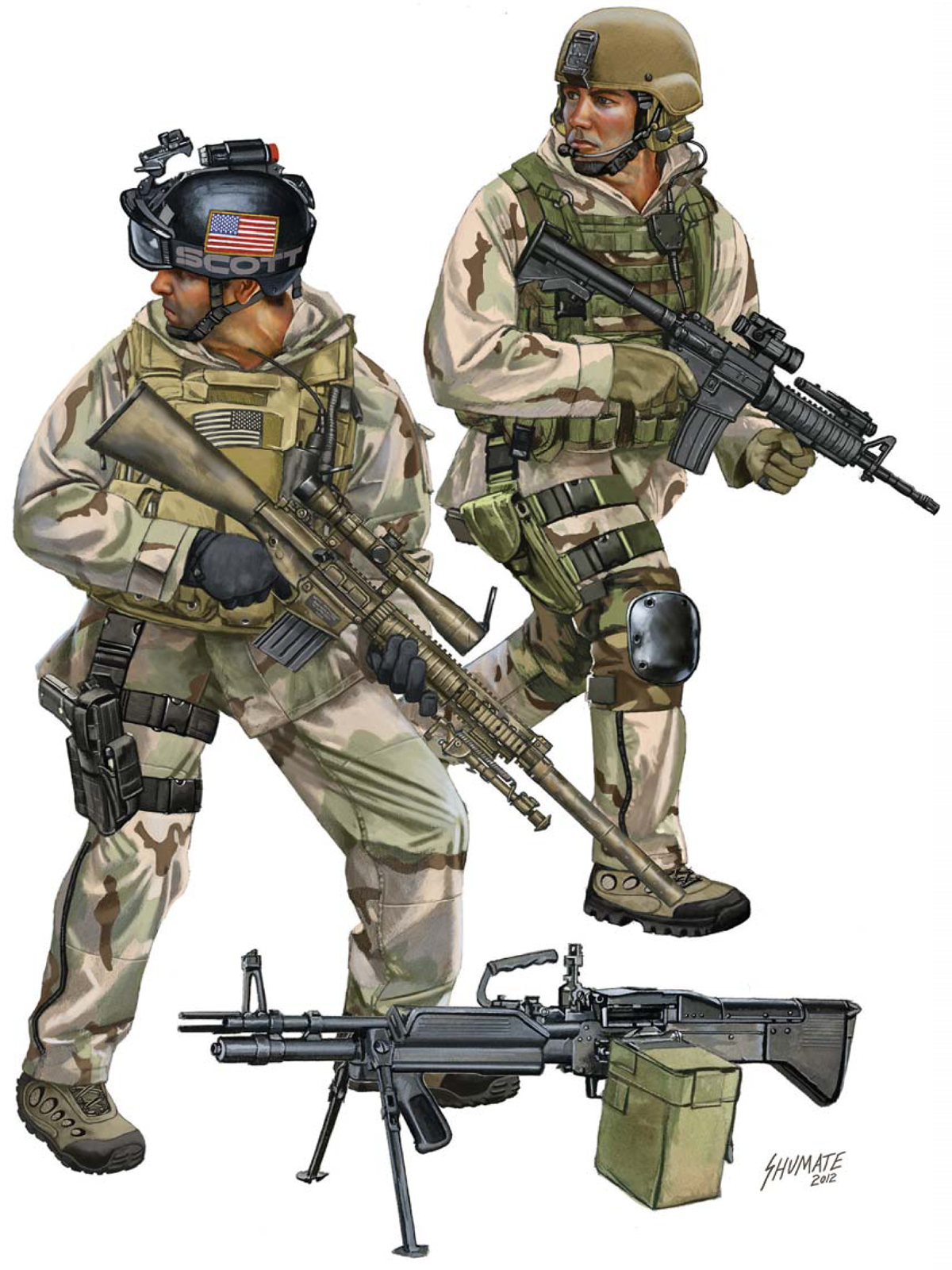
The SR-25 was a popular choice in Afghanistan due to its longer range and thanks to its heavier 7.62mm caliber, ruggedness, and semiautomatic capability. This final element made it a strong contender against traditional bolt-action sniper rifles as it allowed for either fast follow-up shots or to be used in extremis in a close-quarter engagement as an assault rifle. The Delta operators within AFO and the Australian SASR teams deployed into the valley also favored the SR-25 for similar reasons.
The Air Force Combat Controller, Technical Sergeant John A. “Chappy” Chapman, carried a camouflage-painted 5.56×45mm M4A1 SOPMOD carbine, equipped with a Knight’s Armament suppressor, AN/PEQ-2 infrared illuminator, and an Aimpoint M68 combat optic. Another MAKO 30 SEAL, known as “Turbo,” also carried an M4A1, most likely with a 40mm M203 grenade launcher mounted under the barrel. The M203 can fire a range of grenade types including high explosive and chemical smoke out to ranges of several hundred meters.
All of the MAKO SEALs carried sidearms – the SEALs preferred the 9×19mm SIG Sauer P226. They carried both fragmentation and smoke grenades. It also appears, from at least one account, that several of the SEALs, including their team leader, carried stand-alone 40mm grenade launchers. These would most likely have been the Vietnam-era M79 that is still used by some US Army Special Forces and SEALs, as it is regarded as being both more accurate and having a greater range than the newer M203 system. It is known that JSOC units such as DEVGRU use a custom-made cut-down M79 grenade launcher with much of the stock and barrel cut away and fitted with a holographic weapon sight developed by unit armourers. This cut-down M79 is known as the ‘pirate gun’ within DEVGRU due to its resemblance to a flintlock pistol.
A final member of the initial team, not mentioned in most accounts, was an operator from JSOC’s secretive Grey Fox. It is unknown how this operator, nicknamed “Thor,” was armed, but an M4A1 or M4A1/M203 combination is a likely bet. He also carried portable signals intelligence (SIGINT) equipment that allowed him to monitor and/or electronically jam enemy communications.
Like all of the AFO teams, MAKO 30 also carried perhaps the most important equipment to successfully prosecute their special reconnaissance mission – a Nikon Coolpix digital camera equipped with an eight-power magnification lens and a “ruggedized” (toughened) Toshiba Libretto laptop which could be used to transmit images via the SATCOM radio carried by Chapman back to AFO and Task Force 11 headquarters.
The team all wore Gore Tex Extreme Cold Weather BDUs in three-color desert pattern and used a mixture of commercially purchased chest rigs and load carriers. Some also used gaiters to counter the heavy snow in the mountains surrounding the Shahikot. Their Pro-Tec-style helmets were non-ballistic (in that they provided no protection against bullets or shrapnel fragment) and were intended as protection against falls during the arduous climb they originally planned for.
At just before 02:50, the MH-47E flared in to land on the peak. As he came closer to the snow-covered ground, one of the 160th SOAR pilots spotted a sandbagged 12.7mm DShK heavy machine-gun position farther up the slope. It was unmanned. As the pilot informed his crew and the SEALs, he pondered whether it could have been a long-forgotten relic of the Soviet– Afghan War.
Moments later, as the Chinook settled into a landing, a crew chief shouted that he could see a tethered donkey farther up the slope in the treeline. Another crewmember called that he could see goat carcasses hanging in nearby trees. Finally a rear gunner spotted an individual raise his head from behind the boulders on the slope and quickly duck back down again. It was now very questionable whether the peak was as uninhabited as NAIL 22’s sensors had earlier indicated.
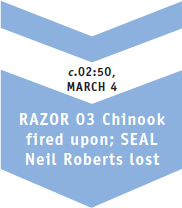
Slab made the command decision that the team would insert and as he prepared to order his team off the helicopter, an RPG came screaming past the cockpit. Moments later, machine-gun fire erupted from the treeline and rounds began to punch through the thin, unarmored sides of the Chinook. A second RPG flew toward them and this time hit home, striking just behind the cockpit and starting an internal fire in the cabin.
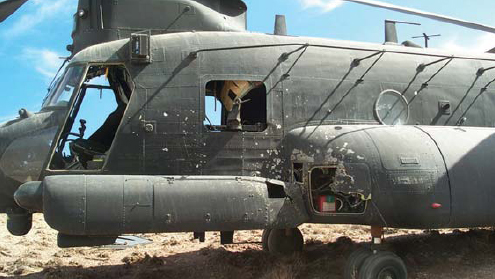

Some of the damage sustained by RAZOR 03 that attempted to insert MAKO 30 onto Takur Ghar. In the close-up, the fuel bladder has sustained an RPG strike and the airframe has been hit numerous times by small arms of varying calibers. (USASOC)
Yet another RPG struck seconds after first hit, exploding into the Chinook’s right-side radar pod. This hit also blew out all AC electrical power to the aircraft, leaving many of the navigation systems out of action and the electrically powered miniguns useless (this incident led to 160th SOAR developing a battery-powered backup system for the miniguns which is in use today).
Another RPG impacted outside the aircraft, sending razor-sharp fragments through the Chinook. A further RPG struck a moment later, hitting the right-side turbine. They were also taking heavy automatic-weapons fire from at least three distinct firing points, including a Russian-made PKM general-purpose machine gun. Thankfully, the helicopter had set down in a slight depression, shielding it from the heavy DShK the pilots had seen. The pilot made the call to save his passengers and the aircraft by getting out of the ambush as quickly as possible and yanked the controls to bring the Chinook back into the air.
As he did so, the Chinook swerving violently to present a more difficult target to the enemy, the SEAL closest to the ramp fell and slid towards the edge. One of the SOAR crew chiefs, wearing a restraining tether, managed to grab hold of the SEAL’s pack but lost his grip as the helicopter again swerved to avoid ground fire. The SEAL disappeared over the edge of the ramp and was lost to the night.
At approximately 02:50, Petty Officer First Class Neil Christopher “Fifi” Roberts, a ten-year veteran of the SEALs, fell some 10ft from the MH-47E’s open ramp and into the knee-deep snow covering the peak of Takur Ghar. He carried only his SAW, his SIG Sauer pistol and several grenades. Realizing his predicament, Roberts quickly activated the infrared strobe that all Task Force 11 members carried to mark their positions at night for friendly forces, particularly for air cover such as the lumbering but deadly AC-130H Spectre.
Tragically, and perhaps because of the accelerated timeline forced upon MAKO 30 by Task Force 11 headquarters, the closest AC-130, GRIM 32, did not have the team’s radio frequencies loaded. According to Sean Naylor, all other AFO elements routinely loaded the frequency for the ever-present AWACS (Airborne Warning And Control System) known as BOSSMAN in case of an in extremis close air support request had to be relayed via the AWACS. MAKO 30 had not done this.
Roberts’ Multi-Band Intra-Team Radio (MBITR) radio, only designed for line-of-sight communications, was effectively useless. The only other radio, a powerful SATCOM set, was carried by Chapman, the Special Tactics airman back on the stricken RAZOR 03. Any account of Roberts’ next actions are, at best, assumptions based on accounts of what was allegedly seen by the AC-130 crew through their optics. An RQ-1 Predator UAV did not arrive on station until some 90 minutes after Roberts fell and gives no further clues.
From these accounts and forensic evidence later recovered from the mountain, it appears Roberts engaged the mujahideen fighters from the IMU on the peak and became involved in a heavy firefight. His night-vision goggles and PEQ-2 infrared illuminator mounted on his SAW would have given him some small advantage over his opponents but he was outnumbered and surrounded. His SAW became disabled at some point by enemy fire and Roberts was struck in the upper right thigh by an enemy round, dropping him into the snow. His SIG Sauer pistol was later recovered unfired and still in its holster so it is assumed that blood loss finally took its inevitable toll on the SEAL and he lapsed into unconsciousness.
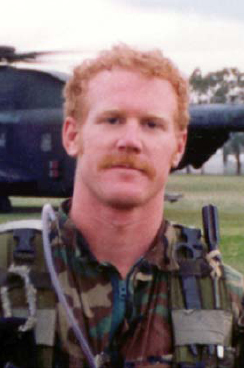
Petty Officer First Class Neil Roberts, killed on top of Takur Ghar on March 4. (US Navy)
Again, from observers who have watched the footage from GRIM 32’s cameras, it appears that Roberts was quickly surrounded by mujahideen who dragged the fallen SEAL farther up the peak to a point near the bunker. Major General Hagenbeck, commander of Task Force Rakkasan, reported in a 2002 interview: “The image was fuzzy, but we believe it showed three al-Qaeda had captured Roberts and were taking him away around to the south side of [blocking position] Ginger and disappearing into a tree line. That was 15 to 20 minutes before the first rescue team arrived” (quoted in Bradley 2002).
It was at 04:27 that Roberts was executed by a single AK round to the head by one of the Uzbeks, a fact supported by the gunshot hole found in Roberts’ Pro-Tec helmet (Staff Sergeant Canon, part of the Ranger QRF, reported that he thought Roberts’ throat had been hacked open but this damage may have been caused posthumously by close air support strikes in the area around his body).
The Uzbeks pilfered a spare set of Gore Tex BDUs in three-color desert pattern, his woolen watch cap and various other items from his vest and rucksack. Accounts suggest they even passed around the infrared strobe (it is not known whether it was helmet-mounted or a handheld unit) for some time before turning it off and retreating to their bunkers.
The final moments of Roberts’ life were witnessed (at least to some degree) by the crew of GRIM 32 who were frustratingly forced to hold their fire in the chaos of conflicting orders reaching them from Task Force 11 headquarters in Masirah, the AFO TOC at Gardez, and the newly established Task Force Blue TOC at Bagram. Blaber and his deputy, Major “Jimmy,” also a respected Delta officer, had the best chance of managing the situation on the mountaintop but were drowned out by contradictory and ill-informed orders from Task Force 11 who were some 1,600km from the battlespace.
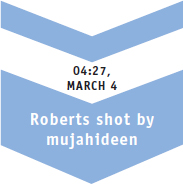
The AFO commander ordered GRIM 32 to fire into the group on the peak and hopefully disperse them to the point that it would become clear who was Roberts either from his strobe or from the fact that he would likely be trying to escape his pursuers. It was a hasty plan but it was Roberts’ best chance at survival. Unfortunately that plan was never enacted in a jumble of mixed messages that left the AC-130 crew no closer to understanding what was happening on the mountain.
RAZOR 03 managed to clear the peak under heavy ground fire. The pilots kept the stricken Chinook aloft for a bare 7km from Takur Ghar until they were forced to make a hard landing in a clearing some 2,000ft lower than the mountain, shortly before 03:00. The SEALs immediately provided 360-degree security around the airframe whilst Chapman got onto the communications net and managed to divert another AC-130, callsign GRIM 33, to scan their surroundings for enemy whilst tasking GRIM 32 to return to the peak in an attempt to ascertain Roberts’ status.
GRIM 33, and a circling P-3 Orion surveillance aircraft, picked up thermal heat signatures from a large group of individuals near the crashlanded Chinook although there is still some question whether these were, in fact, friendly-force elements from the Rakkasans. The AC-130 stayed on station to protect RAZOR 03 whilst a second MH-47E was flown up from Gardez. Slab, the MAKO team leader, wanted the second MH-47E to pick them up and fly them directly to the peak to try to rescue Roberts.
However, he was told in no uncertain terms that they would first return to Gardez, drop off the Grey Fox operator and the crew of RAZOR 03 along with much of the now not-needed gear including Chapman’s SATCOM radio set, surveillance spotting ’scopes, spare cold weather gear, cameras, and their backpacks. Their objective had rapidly changed – MAKO 30 were now on a direct-action recovery mission, not special reconnaissance, and they needed ammunition more than cameras.
When the replacement helicopter, callsign RAZOR 04, arrived at 03:45, MAKO 30 and the crew of RAZOR 03 boarded and the helo flew them all back to Gardez against the continual strong objections of the SEALs. They unloaded the 160th personnel, the Grey Fox operator, and their extra equipment quickly and lifted off at 04:45 to return to Takur Ghar.
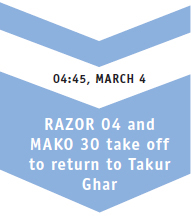
The helicopter was unfortunately now critically low on fuel and with no time to refuel (there were no refueling stations at Gardez at that time), the crew of RAZOR 04 would only have one chance to insert the SEALs and no opportunity to look for a safer, offset HLZ. It was going to have to be the peak, a known “cherry” HLZ (“cherry” denotes a “hot” or contested HLZ whilst “ice” denotes a safe HLZ with no obvious enemy presence).
The SEALs made contact with GRIM 32, the AC-130 still on station over the mountain, and requested pre-assault fires from the gunship one minute prior to touchdown. The crew of GRIM 32 (piloted by the same pilot who had flown GRIM 31 two days earlier when it was involved in the friendly-fire incident that killed Special Forces Chief Warrant Officer Stanley Harriman and several AMF from Task Force Hammer) would not agree the request as they could not clearly identify Roberts and were understandably worried their fires might injure or kill him. The crew was also still confused about the exact situation on the ground as numerous headquarters elements issued conflicting orders.
GRIM 32, trying to assist RAZOR 04 in some way, identified a safer offset HLZ for the insertion; however, communications had by this stage broken down between the AC-130 and the inbound MH-47E. Officially, there were technical issues with the satellite-communications sets although some accounts allege that RAZOR 04 simply stopped talking to the gunship after preparatory fires were denied. The AC-130 wrongly assumed that RAZOR 04 was coming in on the offset HLZ they had identified and were shocked when moments later the Chinook swung in to land directly on the peak at 04:55. Some 30 minutes after Roberts had been excuted, his teammates had returned to attempt to rescue him.
As RAZOR 04 flared in to land, the mujahideen defenders of Takur Ghar could not believe their luck when yet another American helicopter was landing on the mountain peak. They quickly manned their positions and the heavy 12.7mm DShK opened fire on the Chinook. Soon, small-arms and PKM fire joined in with the heavy machine gun. One of the door-gunners managed to fire off only a few rounds in response before his minigun suffered a stoppage. RAZOR 04, remarkably, landed relatively in one piece. With the ramp down, the SEALs and Chapman charged off into the knee-deep snow in search of their comrade.
At first, the enemy didn’t spot the SEALs in the early-morning darkness and concentrated their fire at RAZOR 04. Finally the helicopter lifted off and escaped the lethal barrage. MAKO 30 had split up into two-man buddy pairs to conduct bounding movement and they were making good ground until the enemy finally spotted them. Chapman had advanced ahead of Slab and stumbled across an enemy bunker on the peak under the trees.
He quickly shot its three occupants with his suppressed M4A1 carbine before Slab caught up with him, undoubtedly saving the rest of the team from what would certainly have been devastating fire as they advanced up the peak. Suddenly, whilst both men crouched at the bunker, a PKM general-purpose machine-gun crew, sited in a second bunker farther back behind the first, opened fire on them. Two of the other SEALs attempted to outflank the second bunker only to be driven to cover by the huge weight of fire.
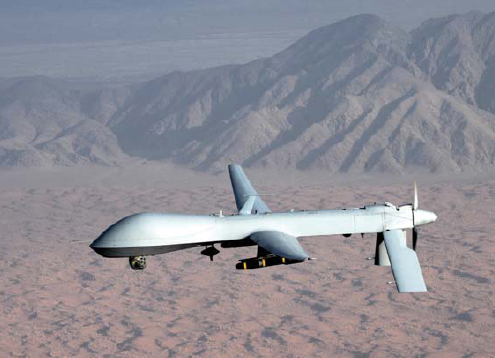
An armed RQ-1 Predator of the type which provided vital close air support to the Rangers. This Predator carries two AGM-114 Hellfire II guided antitank missiles. Recent versions now have the capability to carry a GBU-38 500lb JDAM. (DOD)
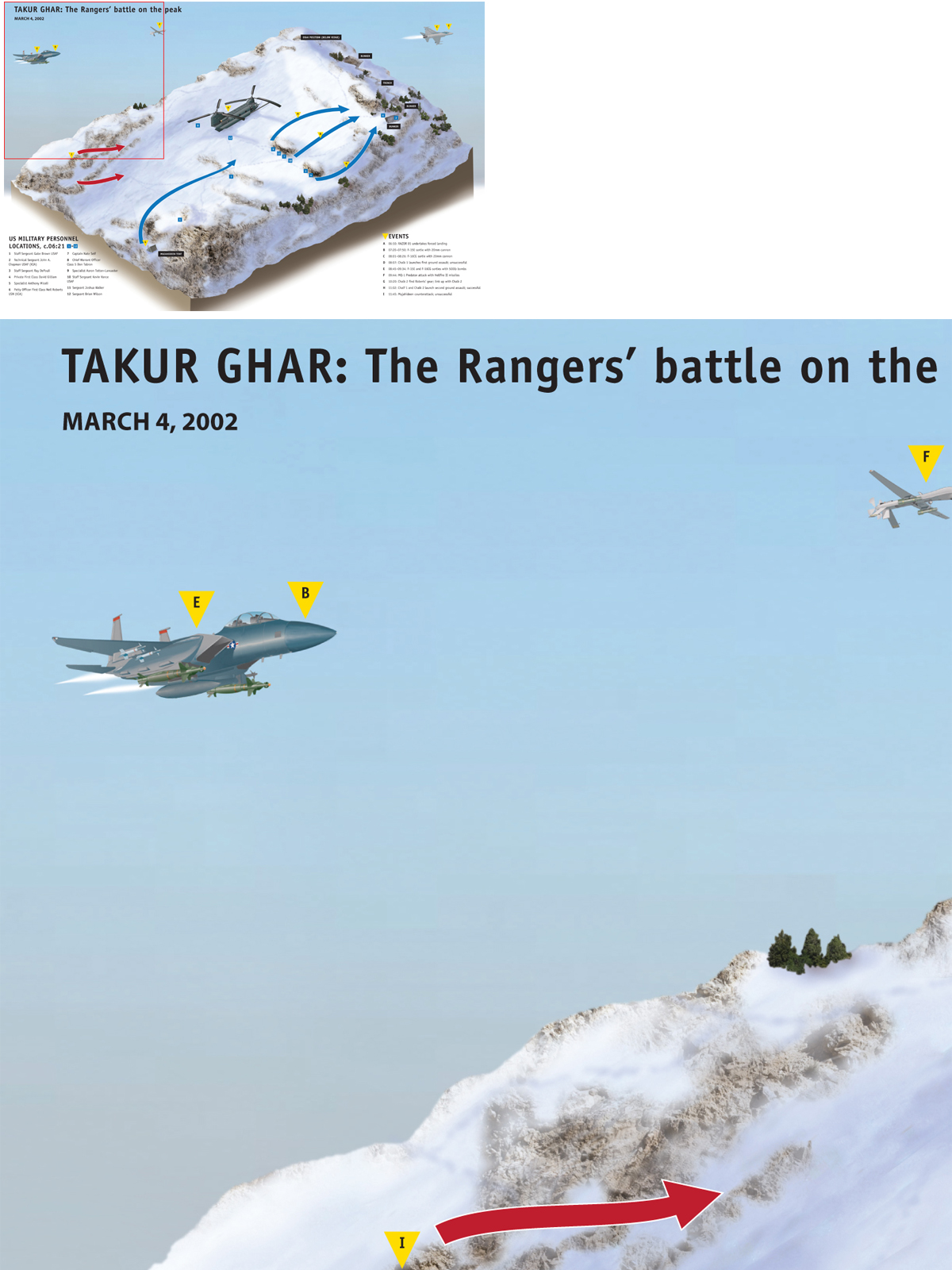
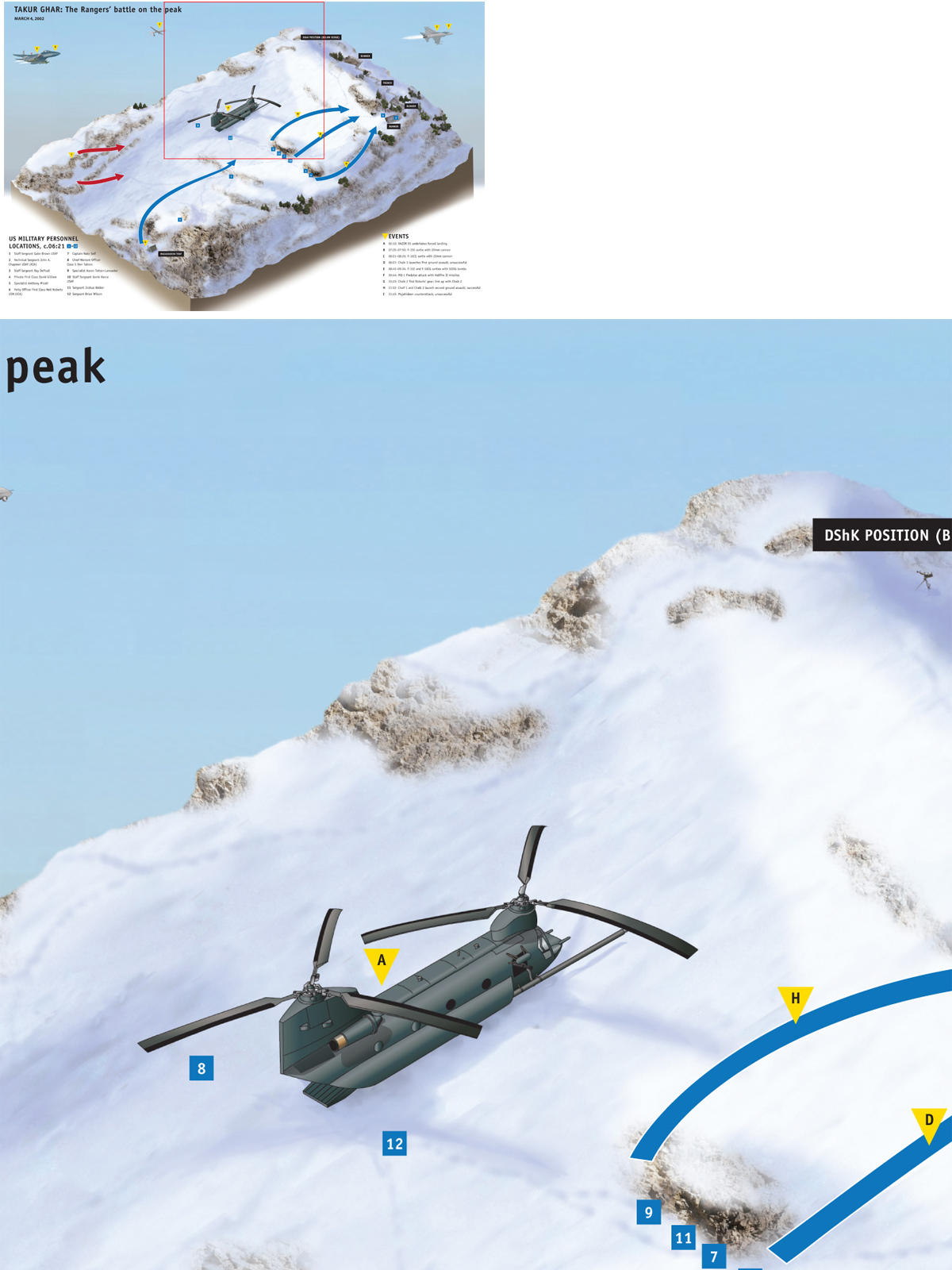
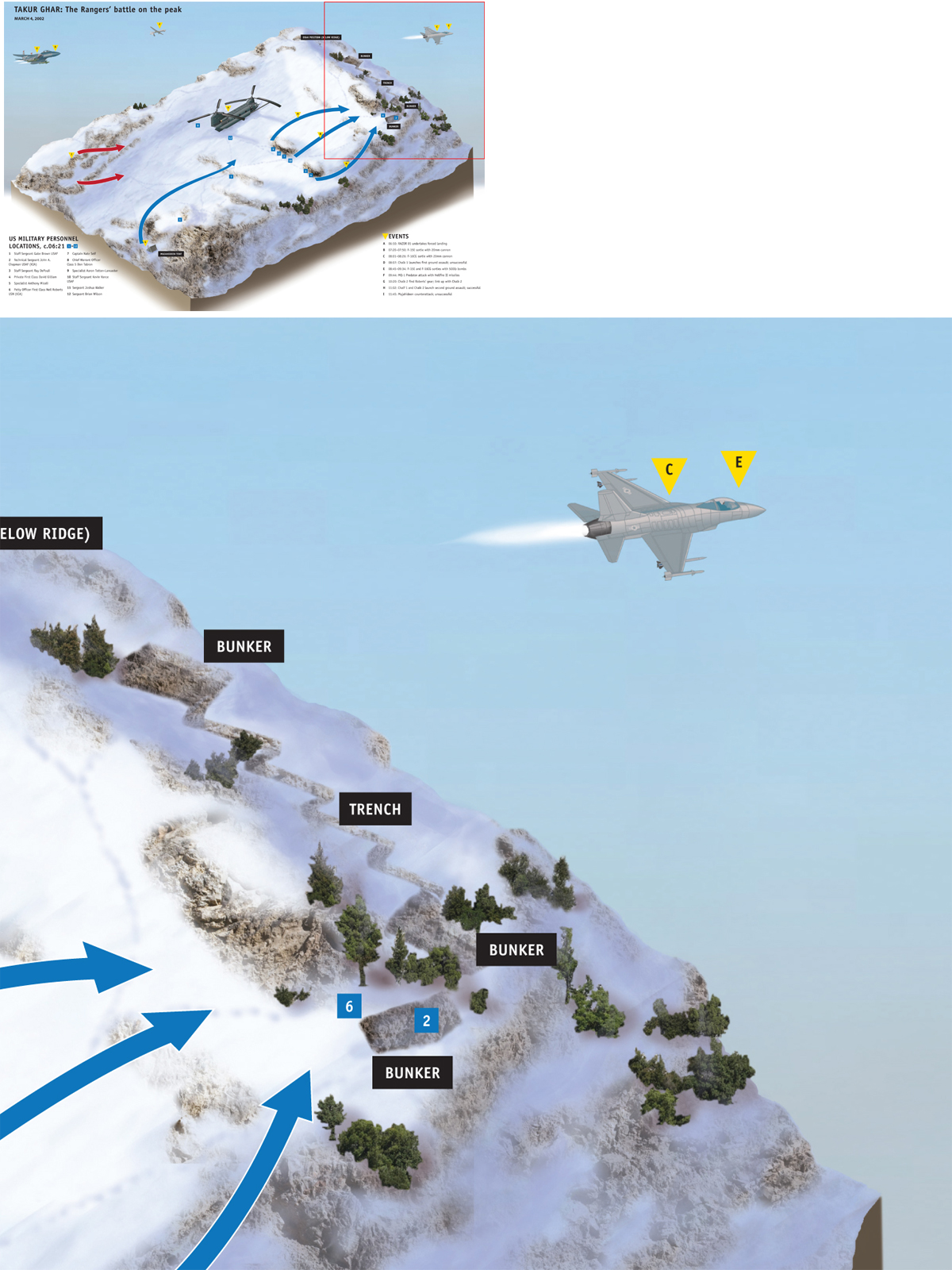
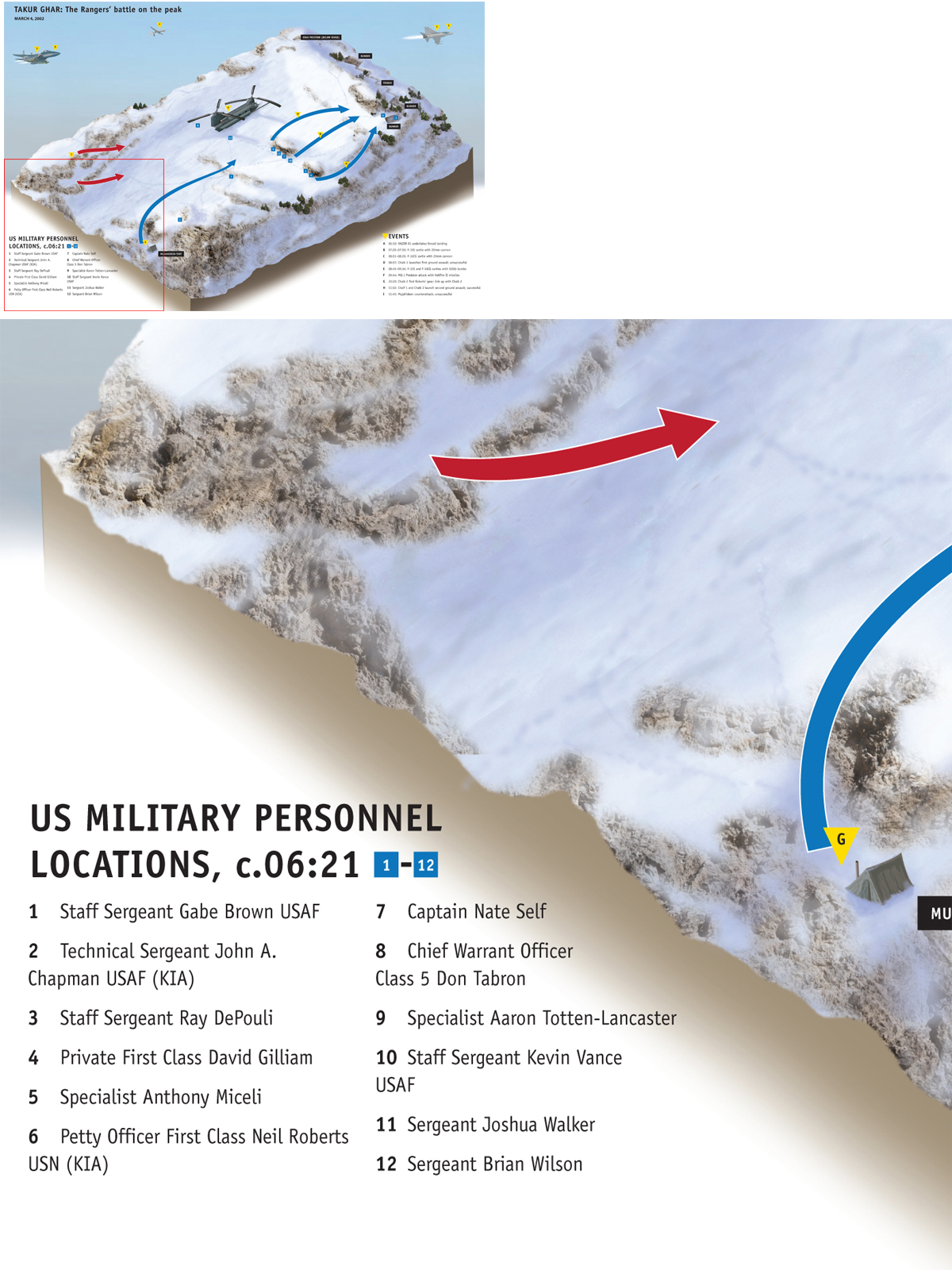


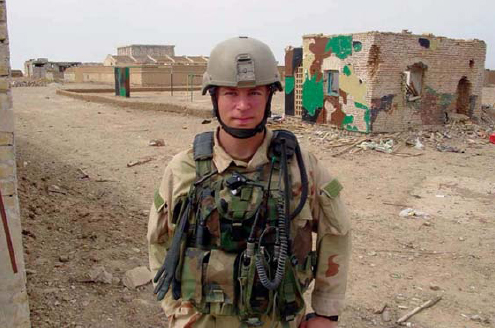
Captain Nate Self pictured near the Tarnak Farms complex prior to the QRF mission on March 4, 2002. (US Army)
The team leader fired two 40mm grenades at the second bunker, both without any appreciable effect. Chapman, crouching next to Slab, was hit by an enemy round from the bunker and fell forward into the snow. Slab had to take out the bunker before he could treat Chapman so he fired three more 40mm grenades at the bunker. The target was just inside the minimum safety distance for the 40mm grenades and most didn’t explode. Frustrated, Slab fired off a volley of grenades at the enemy off to his left who were firing at the other SEALs before finally launching his last two grenades toward the DShK position. With his ammunition expended, he dropped the launcher to the ground and shouldered his SR-25.
Kyle and Brett were pinned down behind a rocky outcrop to the left of Slab, taking fire from both the DShK position and the second bunker. Slab quickly coordinated with them and Brett bravely stood up, firing his M60E4 from the shoulder down into the bunker. One of the other SEALs, presumably Kyle, threw two hand grenades at the bunker, temporarily suppressing the mujahideen fire.
Slab and Kyle moved out of cover to close-assault the bunker but as they broke cover, a Soviet fragmentation grenade was lobbed toward them. The grenade detonated in front of the rock they were using for cover, wounding Brett in the foot. Moments later, an IMU fighter armed with an AK-47 boldly stepped from the bunker and shot the already wounded Brett twice in the legs.
Slab looked across at Chapman and saw no sign of life. Earlier he could see Chapman’s IP laser moving up and down with his labored breathing. Now he could see no such sign. He crawled over Chapman’s motionless legs but did not try to speak to him as Slab didn’t want to give away his position with the enemy in such close proximity.
With Brett seriously wounded, Kyle lightly wounded and Chapman apparently dead, Slab had no choice but to give the order to break contact with the enemy and withdraw from the peak. He lobbed a chemical smoke grenade to cover their retreat as the SEALs withdrew using bounding movement, covering each other as they ran towards a ledge on the eastern side of the peak. As they ran, Turbo was hit, nearly severing one of his feet at the ankle. Randy grabbed him and moved him out onto the ledge into cover.
After a 22-minute firefight, MAKO 30, with one dead, two seriously wounded and one lightly wounded, was combat ineffective.
Upon reaching cover on the narrow ledge to the east of the peak, the team leader immediately contacted the orbiting AC-130, GRIM 32, via his MBITR line-of-sight team radio to request both immediate fire support and to relay his request for the Task Force 11 QRF to be launched from Bagram. The AC-130 asked Slab to turn on his IR strobe to identify himself and his men before beginning to fire upon the bunkers and trees with the heaviest weapon system the gunship carried, the 105mm howitzer.
A mujahideen 82mm mortar crew then began firing onto the peak, seemingly indiscriminately and without regard to the chance of hitting their own fighters, forcing the SEALs to scramble farther down the side of the mountain to a shelf that sheltered them from the bombs. As the first 105mm rounds from the AC-130 thundered into the enemy positions on Takur Ghar, the call for the QRF reached Bagram.
35 Rangers from the 1st Platoon, Alpha Company, 1st Battalion of the 75th Ranger Regiment led by Captain Nate Self had been assigned the duty of QRF for all Task Force 11 operations. Only half of the platoon was available that day as the remainder was conducting live-fire training at Tarnak Farms, a former home to none other than bin Laden.
The QRF Rangers were on “strip alert” at Bagram waiting for the call to assist troops in contact or downed aviators. The call from GRIM 32 was eventually channeled to the Task Force 11 TOC at Bagram and Self and his men were assigned the mission. The information provided by the TOC to Self was confused and contradictory – the initial call was for the downed Chinook, RAZOR 03, but that soon changed with reports of an operator falling from a helicopter. The QRF were not even informed of the existence of MAKO 30 until they were airborne.
Self had an amalgamated eight-man Ranger chalk comprised of a squad leader, one three-man fire team and one two-man fire team, and a two-man machine-gun team. Staff Sergeant Ray DePouli led the Ranger element, known as Chalk 1, that included Sergeant Joshua Walker, Sergeant Bradley Crose, grenadier Private First Class Matt Commons, SAW gunners Specialist Aaron Totten-Lancaster and Specialist Anthony Miceli, and the machine-gun team of Specialist Marc Anderson and his assistant gunner, Private First Class David Gilliam.
The majority of the Rangers carried M4A1 carbines with mounted PEQ-2 infrared markers, Surefire tactical lights, and M68 Aimpoint “red dot” optics. Commons had the only 40mm M203 grenade launcher amongst the team mounted under the barrel of his carbine. Each Ranger carried between ten and 15 30-round magazines of ammunition for their M4A1s and additional ammunition for the SAWs and M240B. Totten-Lancaster and Miceli carried the squad support weapons – the 5.56mm M249 SAWs – while the hulking Anderson manned the big 7.62mm M240B.
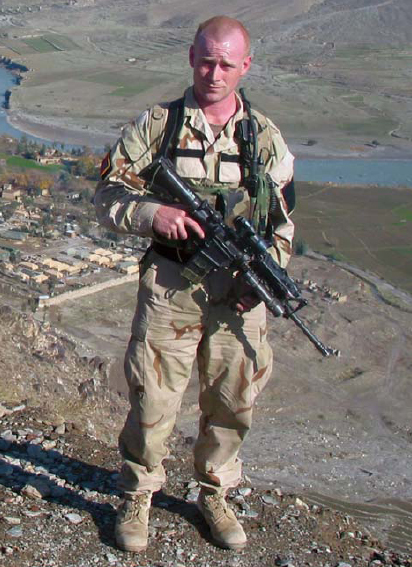
ETAC Staff Sergeant Kevin Vance USAF, Captain Self’s principal air controller on Takur Ghar. He carries a modified M4A1 carbine with M68 Aimpoint, AN/PEQ-2, and Surefire light. (US Air Force)
Also directly under Self’s command was his assigned Air Force ETAC, Staff Sergeant Kevin Vance, who would serve as his link to the vital close air support. Attached to the Rangers for the mission were three members of the Air Force’s Special Tactics Squadrons (STS) – two Pararescue Jumpers known as PJs (rescue specialists highly trained in combat medicine), Technical Sergeant Keary Miller and Senior Airman Jason Cunningham, plus a Combat Controller, Staff Sergeant Gabe Brown, who carried out a similar role to Vance, the attached ETAC.
Staff Sergeant Arin Canon commanded the second Ranger chalk, Chalk 2, on board RAZOR 02. Canon led ten Rangers comprising Staff Sergeant Harper Wilmoth, a two-man fire team and a three-man fire team each carrying two M249 SAWs and two M203 launchers in addition to their M4A1 carbines, a two-man machine-gun team carrying the M240B, and a combat medic. Both Ranger chalks and the Nightstalker crews were still receiving contradictory information that would only increase once they were in the air.
Just after 05:00, RAZOR 01, carrying Self’s Chalk 1, lifted off from Bagram with RAZOR 02 following minutes later. At first, the helicopters were directed to the forward staging area at Gardez where they were told that they would be briefed on a plan, but that directive soon changed mid-flight when they were ordered to fly finally toward the Shahikot.
During the flight, Self received further information that his team was to land and extract a “SEAL sniper team” that was in contact with the enemy. At that point, the information the QRF was receiving indicated, falsely as it turned out, that Roberts had already linked up with the MAKO 30 element. The SATCOM radios on board the 160th SOAR Chinooks were also malfunctioning and meant that the aircrews had limited contact with their headquarters element who were issuing the orders and updates.
Above the mountain, GRIM 32 continued to provide supporting fires to MAKO 30 as the sun slowly rose. AC-130s were prohibited from flying in daylight since the 1991 shootdown of an AC-130 during the battle of Khafji on the Kuwaiti border. The AFO commander, Blaber, repeatedly urged the AC-130 to stay on station until the QRF arrived, only minutes away. The MAKO 30 team leader also pleaded with the aircrew to continue their vigil until other aircraft could be on-station overhead.
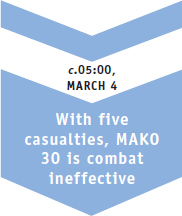
GRIM 32 were in an unenviable position, ignoring repeated calls for them to return to base as they tried to stay over the battlespace for as long as possible. The Spectre had also had two suspected MANPADS SAMs fired at them as the enemy began to be able to make out the aircraft’s shape in the increasing light. GRIM 32 finally had to turn for home at 06:05 as the fuel status became critical.
A pair of Air Force F-15Es were inbound and being vectored to the airspace to continue to provide vital close air support. As the AC-130 pulled away for its flight home, the aircrew passed the coordinates of the offset HLZ they had identified to an orbiting AWACS and reiterated the warning about landing on the peak: “Whatever you do, don’t send them [the QRF] back to this same LZ. It is absolutely hot!” (Naylor 2005: 338).
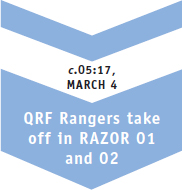
The SEALs of MAKO 30 had moved on from their initial refuge and were now approximately 1km down the face of the mountain, shielded away from enemy fire from the peak. With the communications chaos, it was still believed by Task Force 11 headquarters that they were in direct contact with the enemy on the HLZ. No mention of the loss of Chapman or any clarification that Roberts was or was not still missing was passed on to the Rangers. As far as Captain Self’s team were aware, they were still inserting on a “cherry” HLZ to extract the SEALs. Self informed his men via a light board in the back of RAZOR 01 – “SEAL snipers in contact w/enemy vic[inity of] LZ. Hot extraction on a hot LZ. Watch your fires” (Self 2008: 148).
This was not the only incorrect information to be given to RAZOR 01 and Ranger Chalk 1. The orbiting Navy P-3 Orion, codenamed TOOLBOX, acting as an airborne relay station between the MH-47Es somehow managed to give the Chinooks the wrong coordinates for the HLZ. Instead of the planned offset HLZ some 800m from the crest, the P-3 appears to have passed the Chinook the coordinates for the peak itself.
The 160th SOAR command on Masirah Island realized the error and desperately tried to contact the Chinooks or the P-3 to try and avert disaster but with the choppy radio reception, their message to abort came too late. RAZOR 02 carrying Canon’s Chalk 2 was placed in a holding pattern due to the small size of the HLZ. Shortly before 06:10, RAZOR 01 and Self’s Rangers circled in to the peak of Takur Ghar with the sun just beginning to rise over the mountains to the east.
The crew of the Chinook could see no sign of the SEAL team as they neared the HLZ but saw much evidence of the recent battle – craters from the 40mm and 105mm rounds from GRIM 32, footprints in the snow and, most worryingly, what appeared to be the small-arms muzzle flashes from around the crest of the mountain where the enemy bunkers and gun positions lay.
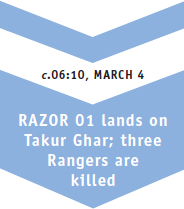
As they flared in, they began receiving effective fire as the enemy small-arms fire began to strike the MH-47E. Both the pilot and co-pilot were struck by rounds but held the aircraft steady (the pilot was hit ten times with all but one striking his body armor and helmet). Both right-side door-gunners opened fire in response (MH-47Es feature a forward and rear door-gunner on both sides of the aircraft – the forward gunner mans an M134 minigun whilst the rear gunner mans the elderly but still effective M60D). Moments later, an RPG-7 rocket exploded into the right-side turbine and the Chinook lost power and dropped the final 15ft at a speed of 500ft per minute to the snow-covered slope.
The Chinook, now without AC electrical power and with its electrically powered miniguns hanging useless in their mounts, managed a hard landing onto a twenty-degree slope facing upward toward the enemy bunkers and the large rocks at the top of the rise. The only saving grace was that it was too far down the slope for the enemy’s 12.7mm DShK to engage it. Mujahideen fighters, now fully alert, again scrambled from their tents and bunkers and began to maneuver toward the stricken aircraft.
A second RPG had struck the cockpit causing further shrapnel injuries to the pilots and as the dazed Rangers and aircrew attempted to get to their feet, yet another tore through the Chinook, miraculously not detonating but igniting an oxygen bottle that exploded and set fire to the cabin. AK and PKM fire raked the downed helicopter, punching through the thin sides. An enemy bullet hit and killed door-gunner Sergeant Philip Svitak, tragically hitting him just under his body armor. A second door-gunner, Staff Sergeant Dave Dube, was wounded with a gunshot to his left leg.

Three of the Rangers of Chalk 1 of the Task Force 11 QRF. From the left: Staff Sergeant Ray DePouli, armed with an M4A1 carbine mounting an M68 Aimpoint, Surefire tactical light, and AN/PEQ-2 infrared illuminator; the assistant gunner Private First Class David Gilliam, armed with the M240B general-purpose machine gun; and SAW gunner Specialist Aaron Totten-Lancaster, armed with a collapsible-stock M249 mounting what appears to be an Aimpoint sight, a Surefire light source, and an AN/PEQ-2 illuminator. (US Army)
The Chinook pilot, Chief Warrant Officer Greg Calvert, could see three fighters emerge over a large rock some 50m up the slope. He managed to unclip his M4A1 carbine and opened fire on them, driving them back into cover. As he attempted to force open the emergency door, the enemy began firing on him again. As he again tried to grab his M4A1, he realized that an enemy bullet had struck his wrist and virtually severed his hand. Worse still, the round was a tracer and was still impacted in his flesh, burning away.
Three Rangers had made it down the ramp and were firing up the slope, following their training and attempting to suppress the enemy. They quickly killed two nearby fighters – one armed with an RPG-7. Self and Totten-Lancaster (Totten-Lancaster had already suffered fragmentation wounds from an exploding RPG round whilst in the Chinook) made it to the front of the aircraft on the right-hand side and took cover in a slight depression alongside the Chinook’s refueling probe. An enemy fighter peered over at them from the rocks directly ahead. Both Americans opened fire, Totten-Lancaster firing short bursts from his SAW and Self firing deliberate aimed shots from his M4A1. The fighter disappeared behind the rock.
Self quickly established that he had lost three of his Rangers in the ambush. Marc Anderson, Brad Crose, and Matt Commons all lay dead. Crose and Commons were both killed as they attempted to race off the ramp as the helicopter landed. Anderson, the team’s machine-gunner, had been hit and killed instantly whilst still inside the aircraft. Both of the pilots were wounded multiple times, one of the aircrew was dead, and several others were hurt, including the seriously wounded Dube. The PJs and the 160th SOAR flight medic, Sergeant First Class Cory Lamoreaux, immediately began attempting to stabilize the wounded, despite the bullets punching through the Chinook.
The 160th Air Mission Commander, Chief Warrant Officer Don Tabron, ran down the ramp and joined the Rangers to the side of the Chinook and began firing controlled pairs, conserving his ammunition. On the far side of the aircraft, Chief Warrant Officer Chuck Gant, the co-pilot, had managed despite a ferocious gunshot wound to his left leg to open the emergency door on the left-hand side of the Chinook and roll out into the snow. From there he covered the left side of the helicopter with his M4A1 whilst attempting to get the attention of a medic.
Inside RAZOR 01, Lamoreaux and the PJs continued their work on the wounded. Calvert had been hit by RPG fragments from yet another rocket that had exploded into the helicopter. Despite his wounds, he continued to try and raise communications with the overhead P-3 or F-15Es using his PRC-112 line-of-sight survival radio. The medic and the PJs kept the wounded in the aircraft, hugging the floor as the 2ft-tall ballistic fuel tanks on both sides of the MH-47E provided the best and only protection.
The Rangers began to regroup and Self developed a hasty battle plan. He knew that the helicopter had come down in a slight, horseshoe-shaped depression that saved them from the DShK positioned farther back on the crest. The enemy was firing down on his men from the higher ground of the peak looking down on the depression and the crashed helicopter. He identified a PKM general-purpose machine gun engaging them from under some trees to his front right, some 60m up the slope. Other mujahideen armed with AKs and RPGs were using the rocks and boulders directly to his front as cover, popping up to fire.
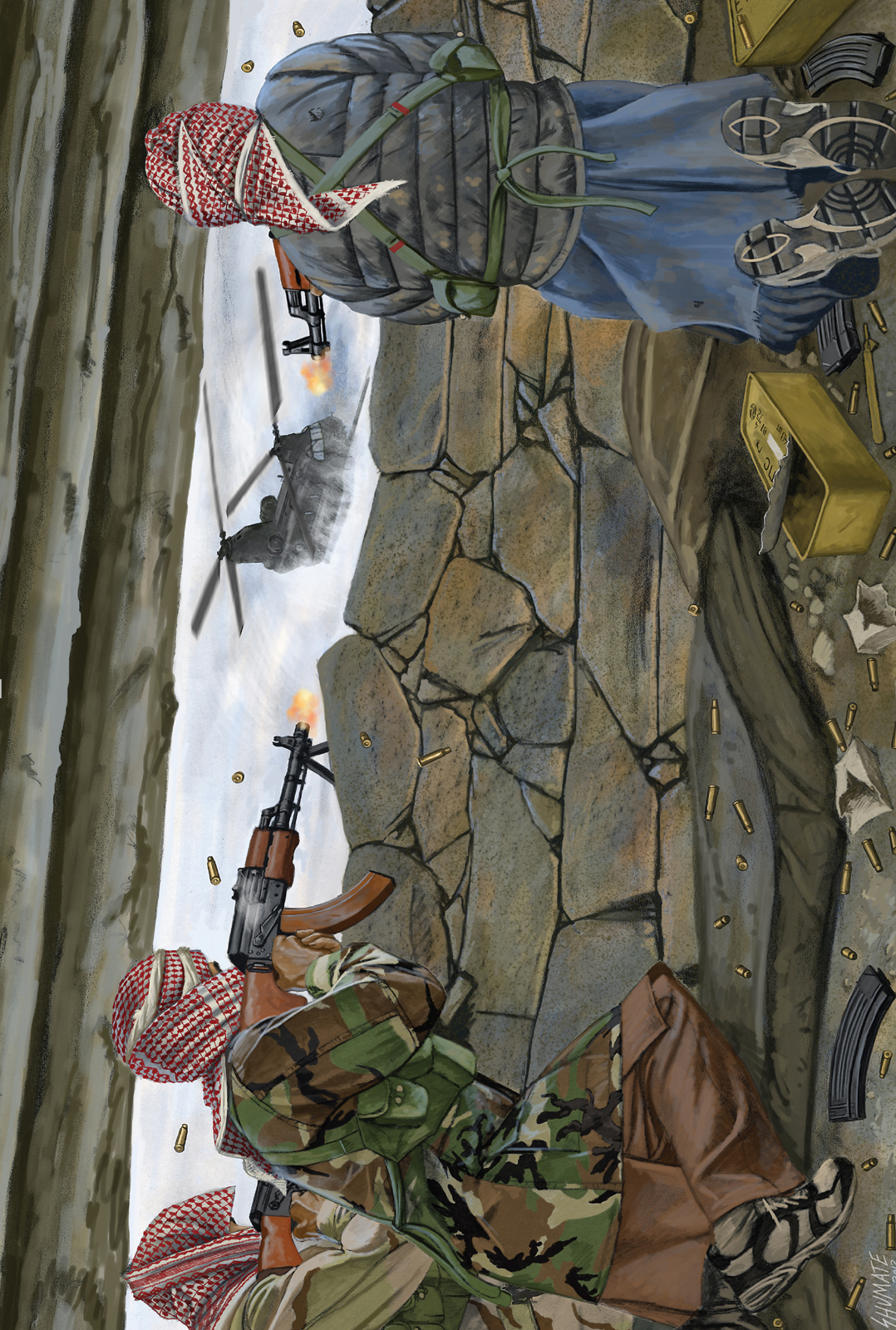
At 06:10, the Chinook known by its callsign of RAZOR 01 landed directly onto the snow-packed peak. As it landed it was engaged in a ferocious volume of gunfire and RPGs from the IMU mujahideen defending the peak. Several mujahideen fighters fired down upon the helicopter from a stone-and-log bunker located at the top of the slope whilst other mujahideen fired from behind the adjacent boulders and attempted to flank the downed helicopter. These mujahideen firing from the bunker were typical of the enemy on Takur Ghar. Most wore the traditional two-piece shalwar kameez with various jackets worn over the top, including commercial cold-weather clothing and US military items (here including a Gore Tex desert-pattern jacket pilfered from the body of Navy SEAL Roberts). The mujahideen were heavily armed with PKM and RPK machine guns, RPG-7s, and various makes of AK assault rifle.
Self decided that the Rangers couldn’t risk being pinned down and in his excellent autobiographical account of the battle, Two Wars, he mentions recalling his Ranger training at the time – “Return fire and seek cover. Locate the enemy. Suppress the enemy. Attack” (Self 2008: 159). He decided to immediately suppress the enemy firing points and launch a counterattack against the peak. He issued his quick battle orders and all of the Rangers stood up and began firing at both known and suspected enemy positions whilst they bounded forward in subteams – one team firing to suppress whilst the other moved and vice versa.
They made it 15–20m to two small clusters of rocks to the right (southeast) of the downed helicopter until the weight of enemy fire drove them to seek cover. Self’s M4A1 malfunctioned and he attempted to clear the stoppage with a cleaning rod that promptly broke. Running back, under fire, to the Chinook’s ramp, he managed to grab Crose’s M4A1 before dashing back to the marginal safety of the rocks.
At this point in the battle, Totten-Lancaster was in the shallow depression near the aircraft’s refueling probe firing his SAW; Self, Walker, and Vance were firing from behind the first pile of rocks; DePouli was firing his carbine from the smaller group of rocks to their right; Gilliam was at the Chinook; and Miceli (minus his SAW, which had been struck by rounds and blown out of his grasp as he exited the Chinook; he was now armed with an M4A1) covered their rear, positioned some 40m behind them on a slight rise.
Totten-Lancaster was ordered to pull back to the rocks so that the Rangers could establish a base of fire with his SAW. As he rolled down the slope towards the rocks, the mujahideen began throwing fragmentation grenades down the slope toward them. Walker responded in kind but could not throw the 50–60m uphill to reach the enemy positions. Another RPG whistled across the ramp of the Chinook. The RPG gunner exposed himself just long enough for DePouli to kill him with several aimed shots.
With the SAW gunner now in position to the left of the larger rocks, DePouli and Self brought Gilliam forward with the M240B, positioning him to the right of DePouli at the smaller group of rocks where the body of a dead mujahideen with an RPG lay. Soon, the M240B was up and firing, suppressing the defenders of the peak. Don Tabron and Sergeant Brian Wilson from the aircrew began ferrying 7.62mm link from the helicopter to Gilliam and as many 5.56mm M4 magazines as they could to pass along to the Rangers.
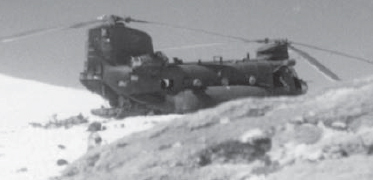
A blurred image of RAZOR 01 crashlanded on Takur Ghar during the battle. It appears to have been taken from the rocks that Self’s Rangers used as cover directly to the right of the helicopter. (US Army)
Becoming frustrated by the grenades being thrown down the slope at them, Walker dashed back to the Chinook and retrieved the one M203 launcher the Rangers had with them – it had been carried by Matt Commons until he had been shot and killed on the ramp. Returning to his position under covering fire from his comrades, Walker began firing 40mm high-explosive grenades up towards the bunker. The first rounds sailed over the peak to explode harmlessly beyond the enemy positions. Walker adjusted his fire and began firing grenades at the boulders, spraying shrapnel over the dug-in defenders.
Self was worried about rear security in case the enemy attempted to flank the static Rangers so he sent Totten-Lancaster’s SAW down to Miceli, giving him the firepower to suppress any such attempts. Some 20m behind Self, in a shallow depression in the snow, crouched the Air Force Combat Controller, Sergeant Gabe Brown. Brown had set down his M4A1 and was using his SATCOM radio to attempt to establish communications with any nearby air support, including the pair of F-15Es that were still orbiting overhead.
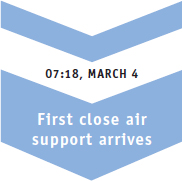
DePouli and Miceli quickly scouted the right flank to ascertain whether the Rangers could use it as a covered approach to close-assault the peak but found only a sheer drop. Farther down the slope to their rear the pair discovered an enemy position. Both men went in firing but the position was at that time unoccupied. They found an old SPG-9 recoilless rifle (without any ammunition), a covered sleeping position, and a specially constructed prayer space for mujahideen fighters. They also recovered an American rucksack and an MBITR. The handheld radio was marked with the callsign of its owner – “RED 1S.” Self knew it was a SEAL callsign. They had found the first evidence of the missing man, Roberts.
At 07:18, Brown had the first close air support (CAS) on-station, the pair of orbiting F-15E Strike Eagles. Self, Brown, and Vance decided against using bombs at this stage fearing the “danger close” range and instead Brown instructed the Twister callsigns to use their 20mm cannon on strafing runs. The Strike Eagles flew in over the peak, launching flares against any potential SAM threat, and spotted the helicopter. Vance didn’t like their initial angle of attack so the attack heading was adjusted as Brown spoke directly to the pilots. This would be the first time in combat history that F-15Es would conduct gun runs in support of troops in contact. The pair of F-15Es flew in again on the new heading to ensure the G-FACs (Ground Forward Air Controllers) – Brown and Vance – were happy with their direction of attack before swinging around for their actual attack run.
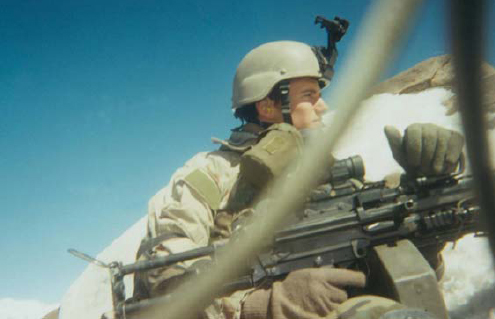
Ranger Specialist Anthony Miceli manning the eastern security position during the battle. He carries Totten-Lancaster’s SAW as his own had been struck by enemy fire as he exited the Chinook. (US Army)
At 07:20, the lead F-15E swept in, its 20mm cannon blazing. The rounds landed short by some 20m. Brown corrected and the F-15E swung in again. At 07:21, with the aim corrected, the 20mm rounds smashed into the enemy bunker and treeline. With good effects on target, the F-15Es banked around again and conducted a third gun run at 07:23. Each gun run had expended anywhere between 80 and 180 rounds of 20mm cannon ammunition.
The enemy on the peak were momentarily dazed and suppressed and the CAS proved a vital morale boost for the embattled Rangers. The F-15Es went off-station to refuel whilst Brown lined up further air support in the form of a pair of F-16CG Fighting Falcons that had just come on-station. He was also contacted by JULIET, the Delta AFO team, which had good views of Takur Ghar and told him about several enemy fighters hunkered down behind the first bunker. Self ordered him to call in the F-16CGs. His plan was for the Falcons to suppress the enemy again with cannon fire before he launched a ground assault with his Rangers.
At approximately 08:01, the first F-16CG Clash callsign rolled into the attack heading, firing its 20mm cannon. As the F-16CG pilots were not yet conditioned to the terrain, and doubtless fearful of friendly fire, the 20mm rounds missed. The pilots came around on another pass and this time the rounds were closer to the target. By the third pass, the big cannon shells were finally hitting the treeline and boulders.
The pair of F-16CGs conducted four gun runs in total before they declared “Winchester” on their ammunition states (“Winchester” is a USAF brevity code indicating running out of ammunition or ordnance much as the brevity code “Bingo” indicates a low fuel state). It was enough for Self and judging the enemy suppressed, he ordered the ground assault.
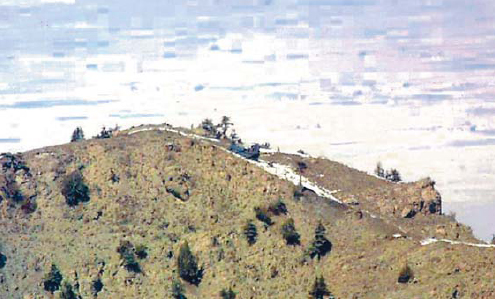
The peak of Takur Ghar with the downed MH-47E, RAZOR 01, visible on the slope. The bunker complex and treeline are directly ahead and to the right of the Chinook. (DOD)
At about 08:07 Gilliam, with Wilson now acting as his assistant gunner, opened fire with the M240B providing covering fire as Self, Walker, Vance, and DePouli stood up and began firing, walking up the slope in the knee-deep snow. The enemy were evidently keeping their heads down and no fire was returned as the Rangers moved as quickly as they could toward the peak. They had covered about half the 55m distance when a mujahideen under the trees fired two quick bursts at them from a PKM emplaced there, before disappearing into a fighting position behind the tree. Self then realized that what they had all assumed was simply fallen logs and foliage that the enemy were using for cover was, in fact, a fortified bunker.
Self ordered the Rangers to withdraw in bounds, firing to suppress as they moved. They didn’t have enough men to start clearing bunkers and other prepared positions. Nor did they have the right sort of weaponry; they carried no M72 LAWs or AT-4s – handheld rockets that excelled at “bunker busting.” As Self commented: “If the enemy bunker was built as well as it looked, then our 7.62mm machine-gun rounds would have little effect on it. And even after the jets’ gun runs, it appeared that some of the enemy fighters had survived. I needed heavier weapons. We had failed to bring our anti-tank missiles along with us – a costly oversight” (Self 2008: 183).
After RAZOR 01 was shot down on the peak, RAZOR 02 with Canon’s team was ordered to return to Gardez until the situation on the mountain became clearer. Canon and his Rangers were understandably frustrated. At Gardez, they were met on the strip by the SEAL commander, Hyder, who joined them in the Chinook, to await the order to return to the trapped Rangers. The pilots were finally supplied with the coordinates of an offset HLZ and at 07:00, they lifted off.
Halfway to the HLZ, they were instructed to go into a holding pattern whilst the first F-15E gun runs on the peak were completed. Soon after, they were cleared to land. MAKO 30 was now in contact with RAZOR 02 and gave the helicopter the coordinates of an offset HLZ closer to the SEALs. Chalk 2 landed at approximately 08:32.
Canon immediately contacted Self and informed him they were on the ground and would be moving to link up with Chalk 1. The only difficulty was that the location of the HLZ meant Canon and his men would need to climb up almost 3,000ft at a seventy-degree incline with their heavy body armor, ammunition, and weapons, including the 12.5kg M240B. Hyder had other ideas. He asked the Rangers to accompany him to link up with the SEALs of MAKO 30 first before attempting to scale the mountain.
Canon contacted Self, who was incredulous – he and his team were in contact with the enemy and needed reinforcements to storm the bunkers. “He can go to his guys. They’re fine. We’re still getting shot at up here. Tell him I need you here” Self told Canon (Self 2008: 186). Hyder set off by himself to link up with his SEALs leaving the Rangers of Chalk 2 to begin the climb. Self was quoted by author Sean Naylor: “I didn’t want him to come up. They’re Navy. They do things differently. We knew that from working with them previously” (quoted in Naylor 2005: 353).
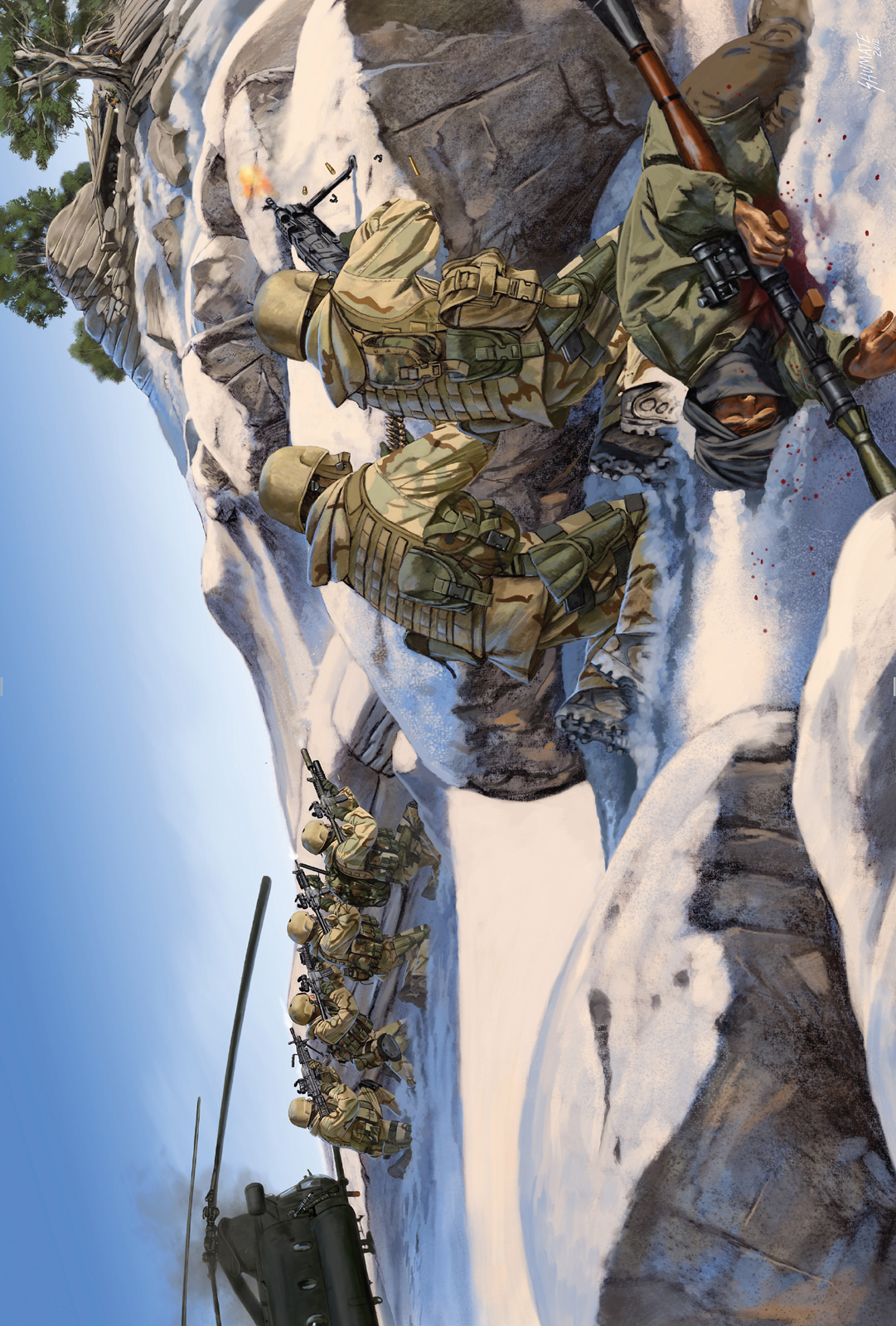
Captain Nate Self soon organized his surviving Rangers to attempt to suppress the enemy defenders. Only once this was done could they attempt to assault the bunker complex on the peak. Self had his Rangers split into two teams – himself, Vance, Totten-Lancaster, and Walker taking cover behind a cluster of rocks some 15m from the crashed Chinook, and DePouli and Gilliam manning the sole M240B general-purpose machine gun on their right flank behind a second, smaller cluster of rocks. Miceli, unseen in this illustration, was at this point protecting the eastern flank behind the Rangers to guard against an enemy attack from that direction.
Self had an M203 flare round fired so that Canon could spot their direction. Canon and Chalk 2 couldn’t see it. Passing their grid reference to Self, Canon realized that Chalk 2 were climbing in from behind Chalk 1’s positions rather than from the western flank as Canon had assumed. Self provided Canon with further directions and Chalk 2 set out. They estimated the climb would take them 45 minutes. Chalk 2 should arrive directly to the east of Chalk 1 and the downed helicopter.
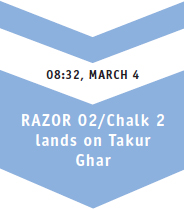
Hyder met up with the SEALs, realizing now how badly wounded two of them were. He developed a plan that would see MAKO 30 walk down the mountain to another HLZ where they would await extraction. Along the way, they saw an apparently unarmed Afghan running down the mountain whom Hyder shot and killed, suspecting the man was an enemy mortar spotter. With the seriously wounded SEALs rapidly deteriorating in the cold, Hyder was forced to find shelter in a tree-lined draw some 1,500m farther down the slope and attempted to treat his wounded men.
Back up on the top of the mountain, a mujahideen mortar crew had begun to bracket the peak with 82mm rounds. With Canon’s team still some time away, Self needed to do something before the mortars found their range. He decided to call in a bomb run on the bunker. Brown made contact with a pair of circling F-15Es that were carrying GBU-12 Paveway II 500lb bombs. As Brown lined up the CAS, Miceli shouted that he could see three enemy walking in the valley to the east. Fearing they may have been controlling the mortar fire, Miceli opened fire with his SAW but the 5.56mm rounds simply didn’t have the power to hit targets beyond their effective range.
Moments later, at 08:45, the lead F-15E, Twister Five Two, came in on its attack run. The bomb landed on the far side of the peak with a deep rumble. Brown and Vance brought in the next aircraft, an F-16CG, which placed its bomb closer to the peak. The two air controllers brought the bombs ever closer on each run. The final GBU-12 impacted the closest, landing just shy of the peak and sending shrapnel into the bunker and trees. With the potential for fratricide, Self wasn’t prepared to call in the bombs any closer to his position.
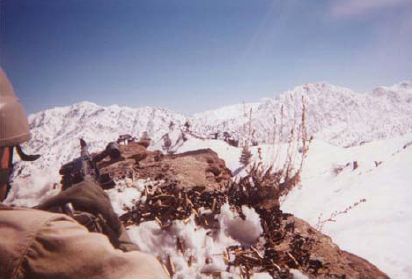
Ranger Specialist Randy J. Pazder mans his M240B whilst maintaining security to the east. This photo appears to have been taken just after the counterattack by mujahideen elements from the ridge visible in the middle ground of the image. (US Army)
Brown and Vance were constantly supported by an Australian SASR patrol from Task Force 64 manning an OP on a mountain peak some 4km to the southwest. The SASR patrol, with an embedded US Air Force Combat Controller, had excellent “eyes on” Takur Ghar and continually fed updates on mujahideen movements to the trapped Rangers. Brigadier Duncan Lewis, the former commander of Australia’s Special Operations Command, stated in a press conference in March 2002:
A group of Australians located in an observation post overlooking the site of the downed aircraft and the stranded US soldiers was the only friendly force in the area – members of this patrol were able to view al Qaeda fighters massing for an assault on the downed US helicopter. The Australian patrol accurately coordinated multiple air strikes to prevent the al Qaeda forces overrunning the survivors. (ADF SOCOMD 2002)
The Rangers and aircrew identified another possible HLZ, a small ledge protected by a steep ridge that would provide cover from the mortars, some 150m to the east. Once they moved the wounded to the shelf, Self hoped an extraction helicopter could be brought in. Brown was in contact with the operator of an orbiting CIA RQ-1 Predator UAV that gave Self an idea. Some of the Predators had been recently armed with a pair of AGM-114 Hellfire II antitank missiles. Brown confirmed that this particular Predator was indeed armed and Self ordered a strike on the bunker – the first recorded use of the Predator as close air support.
At about 09:44, the first Hellfire missed, striking somewhere to their north. The controller lined up another shot and launched its second Hellfire into the trees and hit the bunker dead on. Self considered another assault with his small team but dismissed the idea and decided to await the arrival of Canon’s Chalk 2. Canon reported that they were now taking ineffective mortar fire, apparently from the same mortar team that had been firing on the peak. Canon’s Rangers ditched as much non-essential gear as they could to lighten their load and speed up the climb, including the ceramic back plates from their RBA (Ranger Body Armor).
At approximately 10:20, after a physically and mentally draining climb, the Rangers of Chalk 2 arrived on the top of the mountain and linked up with Chalk 1. They also made a disturbing discovery as they arrived – a discarded American Pro-Tec helmet with a single bullet hole and blood inside it. They also found a Nalgene water bottle with “Fifi,” Roberts’ nickname, written on it. Now that the two Ranger elements had linked up, Self wasted no time in planning another assault on the peak. He quickly issued his orders.
The second machine-gun team – Specialists Randy Pazder and Omar Vela – was placed next to Gilliam and Wilson as they had the best arcs to cover the advance. The plan was straightforward – whilst the two M240Bs commanded by Canon fired suppressive fires on the peak, Staff Sergeant Harper Wilmoth and a fire team from Chalk 2 would advance in bounds with Walker leading a second fire team. DePouli, Miceli, and Totten-Lancaster would provide flank security.
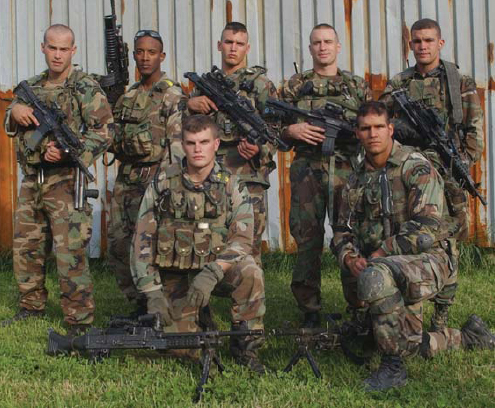
Some of the Rangers of Chalk 2. From left to right: Staff Sergeant Harper Wilmoth; Specialist Oscar Escano; Specialist Randy Pazder; Specialist Jonas Polson; Sergeant Patrick George; Specialist Omar Vela; Specialist Chris Cunningham. (US Army)
Upon Self’s order, at 11:02 the machine-gunners opened fire and the Rangers charged up the slope as quickly as the snow would allow. The fire teams reached the first bunker – its occupants having been killed by the Predator – and killed an enemy fighter hiding behind it. Discovering the second bunker and the roughly hewn trench lines on the far side of the peak, the Rangers went into clearance mode, posting fragmentation grenades and spraying the trenches with automatic fire. Canon, who had now joined the assault elements, posted a grenade into the second bunker that set off a number of RPG rounds stored there, destroying the bunker and knocking Canon off his feet.
Canon also located the missing man, whose fall from the Chinook some eight hours earlier had triggered the Rangers’ mission. Neil Roberts’ body was discovered near the boulders and under the tree the Rangers had nicknamed the “Bonsai.” He had a fatal head wound. Initially the Rangers were concerned they had killed the American with the air strikes or their small-arms fire although this was later proven to not have been the case. The body of Air Force Combat Controller John Chapman was also found in the first bunker, puzzling the Rangers as they were unaware MAKO 30 had lost a second man.
Wilmoth’s fire team continued around past the enemy positions and cleared up towards the southern edge of the peak where they discovered another enemy fighter hiding near the far end of the boulders. He was rapidly engaged and killed. The DShK position encountered by MAKO 30 earlier had been abandoned. At 11:14, Staff Sergeant Wilmoth declared the objective secure – the Rangers had finally cleared the peak.
Exactly what happened to Technical Sergeant John A. “Chappy” Chapman remains open to considerable conjecture. What appears to have occurred was that at 05:52, some 30 minutes after the SEALs of MAKO 30 had broken contact and withdrawn from the peak, an RQ-1 Predator UAV spotted an unusual and disturbing series of events on the mountain.
The Predator’s camera picked up an unknown individual, presumably a mujahideen fighter, emerge from cover and cross in front of the first bunker whose initial three occupants had been killed by Chapman earlier that morning. This individual appeared to be trying to flank whoever was now occupying that bunker.
Another enemy fighter emerged from the east of the bunker and fired an RPG rocket at the bunker. The first individual, still attempting to flank the bunker, was then killed by small-arms fire from within the bunker itself. The fighter carrying the RPG then ended the short firefight by assaulting the bunker and presumably killing whoever was inside.
Chapman’s body was recovered not outside the first bunker where he had first fallen but inside the bunker, lending weight to the theory that perhaps Chapman was not actually dead when the SEALs withdrew. Perhaps only unconscious and weakened from blood loss (later coronial evidence declared that his gunshot wound would have likely been immediately fatal), Chapman may have made it into the bunker to await rescue until spotted by the enemy fighters and after a valiant defense, he was finally shot and killed.
Other possible explanations include the hypothesis that somehow Roberts was not killed when initially thought but that he fought on. The location of his body, however, tallied with where he fell after he was brutally executed. Chapman’s body could have been dragged into the bunker by an enemy fighter or blown into the bunker by the repeated air strikes conducted in support of the Ranger QRF.
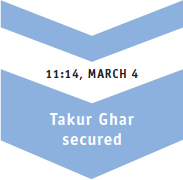
The puzzling incident could also be explained by a friendly-fire clash between mujahideen fighters, caused by the chaos and confusion of the battle on the mountain. Weighing the probabilities, this is perhaps the most likely explanation. Whoever the mysterious shooter in the bunker was, he was finally killed less than a minute before RAZOR 01 arrived on the peak at 06:07.
Now that the mountaintop had been cleared of all enemy forces and secured, Self’s efforts focused on the most pressing matter at hand – evacuating the seriously wounded before their deteriorating state and the cold weather could claim more victims. Vance established communications with the Task Force 11 headquarters element at Masirah whilst the Rangers and aircrew used Skedco litters, carried by the Air Force PJs for exactly this contingency, to drag the seriously wounded up the slope toward the peak where Ranger medic, Sergeant Matt LaFrenz, had established his casualty collection point (CCP).
At 11:31, as Vance relayed that the HLZ was “ice,” sudden small-arms fire rang out from the south-southeast behind the downed Chinook. Self and his men quickly identified that the fire, likely from a PKM, was originating from a narrow shelf several hundred meters behind them, apparently using a cave complex to attempt to flank the Rangers. Both M240B gunners began returning fire whilst Brown called for immediate CAS. Self established his Rangers in two defensive positions – the first was around the bunker complex on the peak and the second around the rear of the Chinook to protect the casualties whilst they were being moved to the CCP. An RPG landed near the large rocks the Rangers had earlier used for cover and exploded up the slope.
Brown and Jaguar One Two, the Air Force Combat Controller embedded with an Australian SASR patrol some 4km to the southwest, now coordinated a B-52 bomber strike on the ledge but the bombs missed. Brown then brought in a pair of US Navy F/A-18 Hornets that dropped a 500lb GBU-12 with astounding accuracy, silencing the enemy fire at 12:06.
The enemy fire had caused two more friendly casualties. One of the PJs, Jason Cunningham, had been hit along with the 160th SOAR flight medic, Cory Lamoreaux. Both had been seriously wounded. The Rangers and aircrew again began moving the casualties up toward the CCP – they now had five seriously wounded requiring litters (stretchers) and six bodies to move to the safety of the peak. The only positive news at this point was that a French Mirage had managed to destroy the 82mm mortar team whose fire had plagued the Rangers all day.
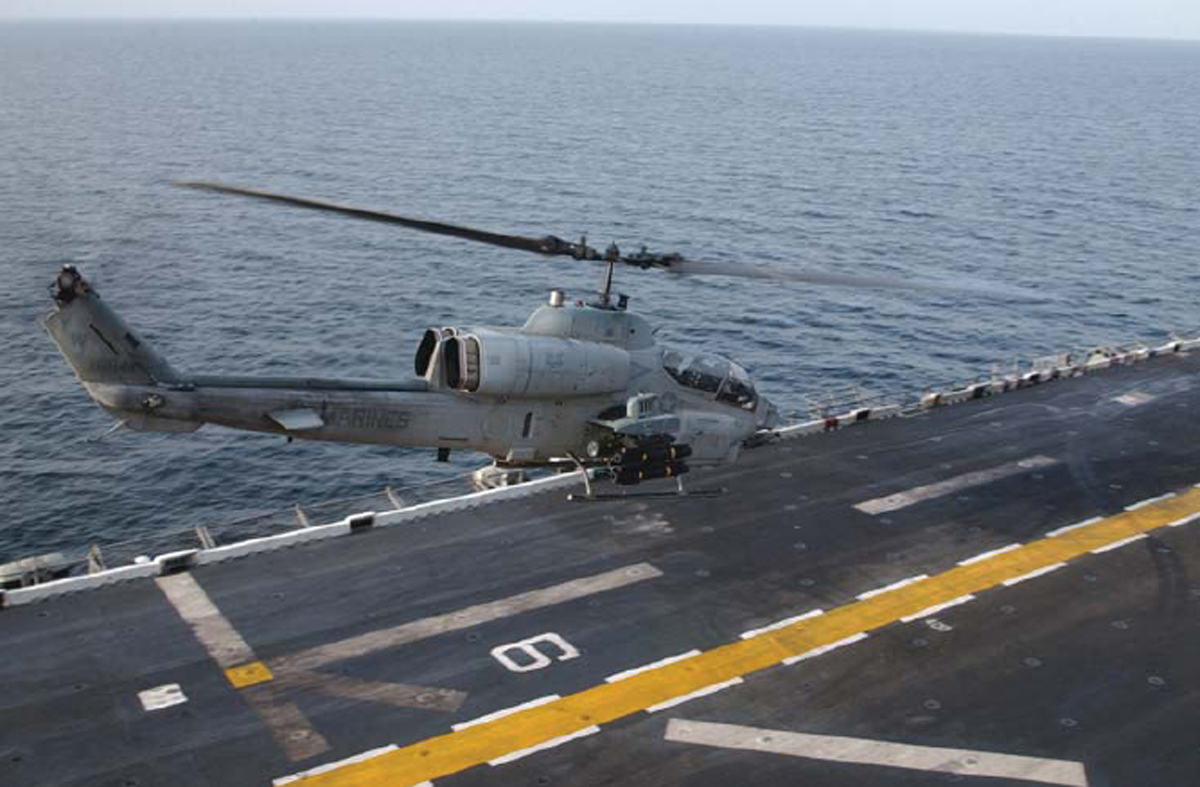
A Marine AH-1W Cobra takes off from USS Bonhomme Richard in support of Operation Anaconda on March 4. At times the number of CAS assets over Takur Ghar created severe command-and-control difficulties. (US Marine Corps)
Brown again requested clarification on when the wounded could be extracted and was told that a Task Force 11 extraction package including SEAL and Ranger reinforcements and Apache gunship cover would soon be launching from Gardez. Self didn’t need the reinforcements – he needed the urgent casualties to be evacuated and was content to wait until night fell to finally extract the lightly wounded and able-bodied.
At around 15:30, another group of enemy appeared on the same ridge to their south-southeast – again both M240B gunners suppressed them whilst Brown vectored in a pair of Navy F-14 Tomcats. One 500lb bomb went “dumb” (a term for when a smart guided bomb such as a Paveway or JDAM loses its targeting guidance) and landed just 30m down the slope from the Chinook, narrowly avoiding causing further injuries. The next bombs luckily landed on target.
With no concrete timing for an extraction of the wounded, Self and his men were becoming increasingly frustrated. LaFrenz was adamant on his casualty status – they would have two further KIA (Killed in Action) unless a helicopter soon arrived. Self reiterated the casualty status to the TOC at Masirah and was met with empty reassurances until eventually Trebon came onto the radio and informed him that no medical extraction would now be conducted until nightfall.
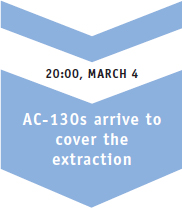
Cunningham, shot in the abdomen, rapidly deteriorated until finally at 18:08, he died. LaFrenz attempted to resuscitate him to no avail. Self reported to the TOC that his casualty count was now seven KIA. Finally at 20:00, two AC-130s came on-station to cover the extraction. Fifteen minutes later, the extraction force reported that they could see the Rangers’ infrared strobe marking the HLZ. With Apache, Predator, and A-10 cover, and with the AC-130s scanning the surrounding peaks and ridges for threats, the first MH-47E of the extraction package set down on Takur Ghar.
As a final hurdle, the lead MH-47E, tasked with extracting the casualties, landed in the wrong direction – with its tail, and ramp, facing down the hill, rather than toward the casualties at the peak – and the SEAL security element that arrived upon it did nothing to assist the exhausted Rangers, Special Tactics, and Nightstalker survivors with loading their wounded. Most of the remaining Rangers of Chalk 1 also loaded onto the first Chinook with their wounded. Finally the first extraction Chinook lifted off, heading to Bagram.
The second MH-47E touched down and the dead were loaded on board. Canon’s Chalk 2 members walked up the ramp and collapsed inside. Last aboard were Vance and Self. A third Chinook managed to precariously land one rear wheel on the narrow ridge MAKO 30 were sheltering upon and the SEALs carried their wounded up the ramp. At about 20:20, the last US servicemen on Takur Ghar were finally extracted.
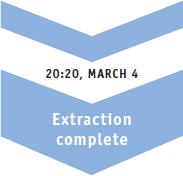
The battle of Takur Ghar had lasted approximately 17 hours. Seven men died on the mountain – one SEAL, one Combat Controller, three Rangers, one Nightstalker, and one Pararescue Jumper. The majority of the survivors suffered wounds, some light and some life threatening. Cory Lamoreaux, the 160th flight medic, recovered from his wounds and returned to the Nightstalkers. “Brett,” the MAKO 30 SEAL, also recovered fully. Another SEAL, “Turbo,” lost his leg below the knee. RAZOR 01’s pilot, Greg Calvert, had his severed hand reattached, and eventually returned to the Nightstalkers to again fly Chinooks.
Task Force Dagger
Commander: Colonel John Mulholland, 5th Special Forces Group (Airborne)
5th Special Forces Group (Airborne)
B Company, 2nd Battalion, 160th Special Operations Aviation Regiment (Airborne)
Special Tactics Squadron elements, USAF Special Operations
Afghan Military Forces:
Commander Zia Lodin (Task Force Hammer)
Commander Kamel Khan (Task Force Anvil)
Commander Zakim Khan (Task Force Anvil)
Task Force Rakkasan
Commander: Colonel Frank Wiercinski, 3rd Brigade, 101st Airborne Division (Air Assault)
1st Battalion, 187th Infantry, 101st Airborne Division (Air Assault)
2nd Battalion, 187th Infantry, 101st Airborne Division (Air Assault)
1st Battalion, 87th Infantry, 10th Mountain Division
Task Force Commando
Commander: Colonel Kevin Wilkerson, 2nd Brigade, 10th Mountain Division
4th Battalion, 31st Infantry, 10th Mountain Division
3rd Battalion, Princess Patricia’s Canadian Light Infantry
Task Force 64
Commander: Lieutenant Colonel Rowan Tink, Special Air Service Regiment
Task Force K-Bar
Commander: Captain Robert Harward, US Navy SEALs
Task Force Bowie
Commander: Brigadier General Gary Harrell, US Army Special Operations Command
Task Force 11 Advanced Force Operations
Commander: Lieutenant Colonel Pete Blaber, US Army 1st Special Forces Operational Detachment – Delta
MAKO 30 – personnel and armament
“Slab” (team leader): SR-25 plus stand-alone grenade launcher, probably cut-down M79
“Brett”: Mk 43 Mod 0
“Fifi” (Petty Officer First Class Neil Roberts): Minimi SPW or Mk 46 Mod 0
“Kyle”: SR-25 plus stand-alone grenade launcher, probably cut-down M79
“Randy”: SR-25 plus stand-alone grenade launcher, probably cut-down M79
“Thor” (Grey Fox SIGINT operator): probably M4A1 (“Thor” was offloaded at Gardez after 04:34 and did not return to Takur Ghar)
“Turbo”: M4A1, possibly with M203
Technical Sergeant John A. Chapman USAF (combat controller): M4A1
Only one of the original three AFO teams now remained in the valley – the Army Delta JULIET team. INDIA and MAKO 31 had been eventually withdrawn as their supplies dwindled. INDIA had been replaced by a new element, MAKO 22, whilst another new SEAL element, MAKO 21, established a position some 2km east of JULIET. JULIET was eventually withdrawn on March 5 and the team left their hide site the same way they had come in – on their Polaris ATVs.
Chalk 1 – personnel and armament
Captain Nate Self (platoon leader): M4A1
Staff Sergeant Ray DePouli (1st Squad leader): M4A1
Sergeant Joshua Walker (1st Squad Alpha Fire Team leader): M4A1
Sergeant Bradley Crose (1st Squad Bravo Fire Team leader): M4A1
Specialist Anthony Miceli (Alpha SAW gunner): M249
Specialist Aaron Totten-Lancaster (Bravo SAW gunner): M249
Private First Class Matthew Commons (Alpha grenadier) M4A1/M203
Specialist Marc Anderson (machine-gunner attached from Weapons Squad): M240B
Private First Class David Gilliam (assistant M240B gunner from Weapons Squad): M4A1
Staff Sergeant Kevin Vance USAF (attached ETAC): M4A1
Attached US Air Force Special Tactics Squadrons operators:
Staff Sergeant Gabe Brown USAF (combat controller): M4A1
Senior Airman Jason Cunningham USAF (Pararescue Jumper): M4A1
Technical Sergeant Keary Miller USAF (Pararescue Jumper): M4A1
Chalk 2 – personnel and armament
Staff Sergeant Arin Canon (Weapons Squad leader): M4A1
Staff Sergeant Harper Wilmoth (2nd Squad leader): M4A1
Sergeant Eric Stebner (2nd Squad Alpha Fire Team leader): M4A1
Sergeant Patrick George (2nd Squad Bravo Fire Team leader): M4A1, probably with M203
Specialist Jonas Polson (Alpha SAW gunner): M249
Specialist Chris Cunningham (Bravo SAW Gunner): M249
Specialist Oscar Escano (Alpha grenadier): M4A1/M203
Specialist Randy Pazder (machine-gunner attached from Weapons Squad): M240B
Specialist Omar Vela (assistant M240B gunner from Weapons Squad): M4A1
Sergeant Matt LaFrenz (platoon medic): M4A1
RAZOR 01 air crew
Chief Warrant Officer Class 5 Don Tabron (air mission commander)
Chief Warrant Officer Class 4 Chuck Gant (pilot)
Chief Warrant Officer Class 3 Greg Calvert (co-pilot)
Sergeant Philip Svitak (engineer/door-gunner)
Staff Sergeant David Dube (flight engineer/door-gunner)
Sergeant Sean Ludwig (crew chief/ramp-gunner)
Sergeant Brian “Jed” Wilson (crew chief/ramp-gunner)
Sergeant First Class Cory Lamoreaux (flight medic)
As the Rakkasans fought through the valley, they conducted over 129 cave clearances and 40 building clearances, and eliminated 22 mujahideen fortifications. By March 4, the enemy appeared largely beaten. For political reasons, Afghan forces were to be introduced into the valley as a belated attempt to “put an Afghan face” on the operation. This inevitably stalled as tribal issues between AMF commanders flared up.
Whilst the “Afghan solution” was being worked out, the 4-31st from the 10th Mountain and the 3rd Battalion of the Princess Patricia’s Canadian Light Infantry were inserted into the Shahikot to reinforce the Rakkasans. Eventually the AMF settled their differences and with SF and AFO support, they advanced into the Shahikot with T-55 tanks in support on March 12, signaling the end of major operations in the valley. Four days later, CENTCOM announced Operation Anaconda over.
The mujahideen had been driven from the Shahikot Valley or they were killed where they stood. Estimates of enemy dead range from source to source with little agreement although a total of anywhere between 200 and 500 dead seems most likely. Coalition forces lost eight men killed in action – seven on Takur Ghar. They also suffered some 80 wounded, many amongst the men of Task Force Rakkasan.
On March 17, 2002, Task Force 11 received time-sensitive intelligence that a possible HVT was travelling within a convoy of al-Qaeda fighters who were attempting to escape by vehicle from the Shahikot and into neighboring Pakistan. An RQ-1 Predator UAV had the convoy under surveillance and reported back to Bagram that the convoy consisted of three Sports Utility Vehicles (SUVs) of the type al-Qaeda HVTs preferred – a white Toyota 4Runner, a second 4Runner painted red, and a Toyota Hilux pickup truck carrying a large security element of hooded gunmen.
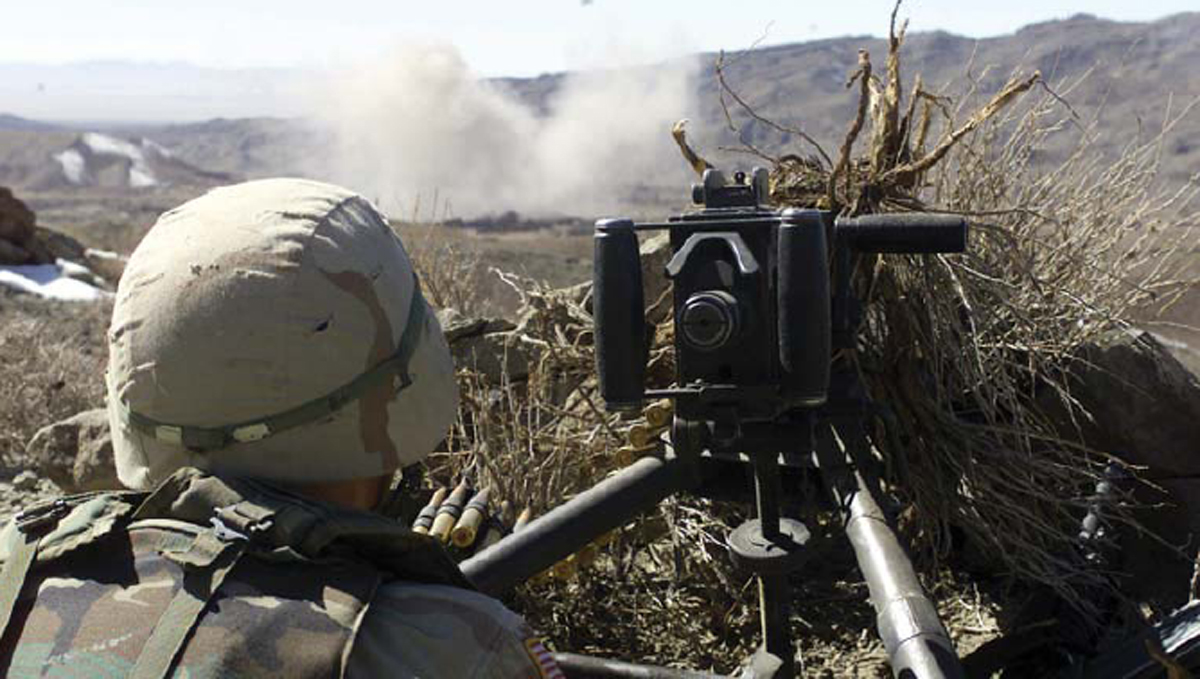
A member of the 1st Battalion, 187th Infantry mans a tripod-mounted .50-caliber M2 heavy machine gun overlooking the Shahikot Valley on March 4. An airstrike has just been conducted on the village of Babukhel. (US Army)
The Task Force 11 force element assigned the mission included SEAL operators from DEVGRU, commanded by Slab, to conduct the actual vehicle stop, with a mixed force of Rangers from both the 1st and 3rd Battalions to act as the QRF in case a security cordon needed to be established. The DEVGRU operators and an assigned Combat Search And Rescue (CSAR) team from Air Force Special Tactics boarded three MH-47Es whilst the Rangers climbed aboard a pair of MH-60G Pave Hawks. The five helicopters launched from Bagram in the early morning, flying low and fast toward the target area.
The combined flight arrived over the location and spotted the convoy driving at speed up a narrow wadi (dry stream-bed). The helicopters approached the convoy from behind before the lead MH-47E overtook the vehicles and performed a fast turn and flared to land in their path. The SUVs abruptly stopped and the gunmen raced from their vehicles to find cover.
With the first sign of hostile intent as the vehicles’ occupants shouldered their AKs, the left-side door-gunner of the landed Chinook opened fire with his M134 minigun. The second MH-47E flew along above the stalled convoy and added to the fire, raking the vehicles with both minigun and M60D fire. The DEVGRU operators also opened fire from the helicopter, having earlier received permission to jettison the Plexiglass side windows in the helicopter.
As the second Chinook peeled away, the third flew over the convoy, its door-gunner opening fire with his minigun until it abruptly suffered a stoppage. A Nightstalker flight medic and former Ranger quickly grabbed his M4A1 and managed to engage and kill the driver of the third SUV as he attempted to reverse out of the kill zone. This third helicopter then swung around and landed behind the crest of a small hill overlooking the wadi, its cargo of operators racing down the ramp and taking up firing positions above the enemy fighters.
The second Chinook turned and flew farther back up the wadi as a fourth vehicle had been spotted, trailing the convoy. Uncertain of hostile intent but unable to land the big helicopter, the Chinook hovered 20ft above the SUV, its left-side minigun trained on the vehicle. A female emerged into the rotorwash with a child in her arms whilst the others exited the vehicle and sat by the side of the road, apparently unarmed. The Chinook dropped off its team of operators who conducted an extensive search of the people and their vehicle. With nothing incriminating found they were held until the main operation was complete and then released to go on their way.
Back at the ambush site, both teams of DEVGRU operators were now firing down on the enemy fighters in a vicious crossfire. As fighters attempted to move to cover or return fire, they were engaged and killed. In minutes the contact was over and the operators moved down into the wadi to secure the dead and wounded. Of the 18 enemy fighters in the three vehicles, 16 had been killed outright and two seriously wounded and captured. The fighters appeared to be a mix of IMU Uzbeks and Chechens and “Afghan Arabs,” and were well equipped and supplied. One wore a makeshift suicide vest of fragmentation grenades concealed in a harness under his arms whilst another, a potential HVT, had disguised himself within a female burkha.
The operators recovered a US-made sound suppressor, a number of US-manufactured fragmentation grenades of a lot issued to Task Force 11, and a Garmin handheld GPS inscribed with the name Gordon. This briefly made news as suggestions were made that this was a device once owned by Master Sergeant Gary Gordon, a Delta sniper killed in Mogadishu, Somalia, in 1993. The GPS was later traced to one of the crew of RAZOR 01.